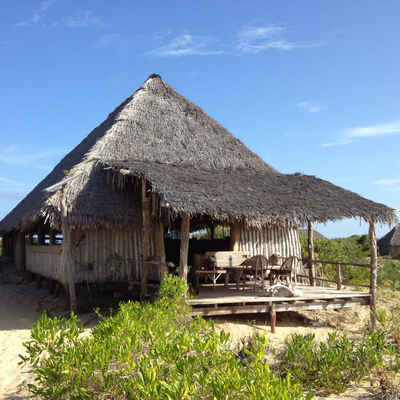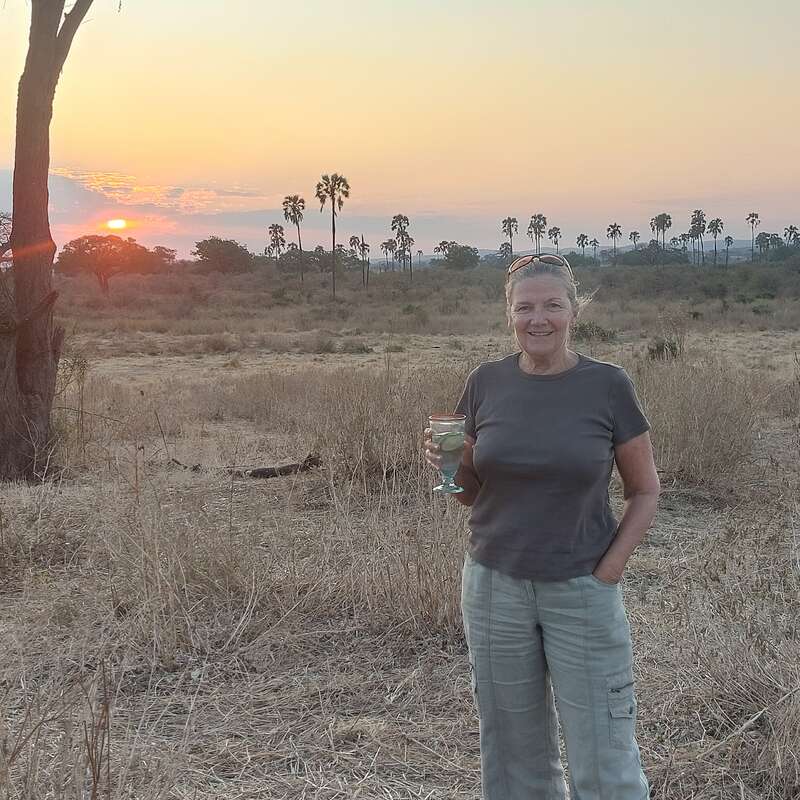About Kizingo
On Lamu's extreme south-western tip, Kizingo (which means “point" in Swahili) is a simple beach lodge of ...
... palm matting and makuti thatch tiles on a large, 12-acre plot of sand dunes and scrub. Built in 2003 by the van Aardt family, and still owned by them, it's a deliberately informal and low-key setup.
We only had the chance to pay a short visit to Kizingo the last time we were in Lamu in 2019, but the atmosphere is laid-back and welcoming. The remote location, small, friendly team and rustic feel to the lodge means a stay here is truly low key, very relaxed and informal.
Accommodation
7 rooms
Children
Best for teenagers.
Open
July to April
Activities

Birdwatching

Boat trip

Scuba-diving

Snorkelling

Watersports
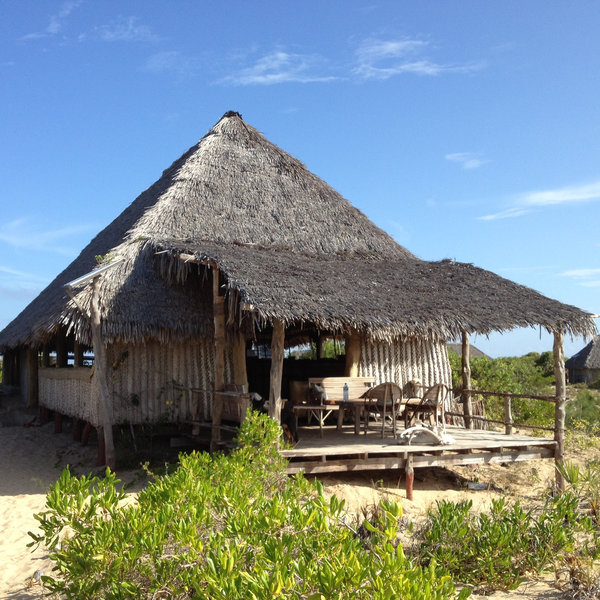

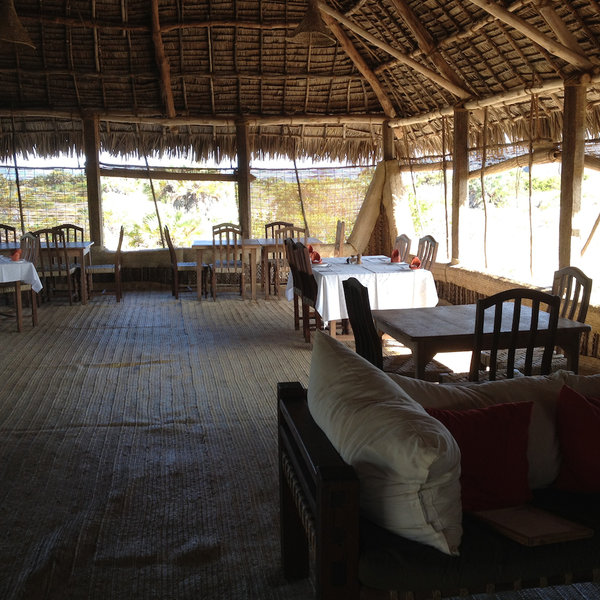
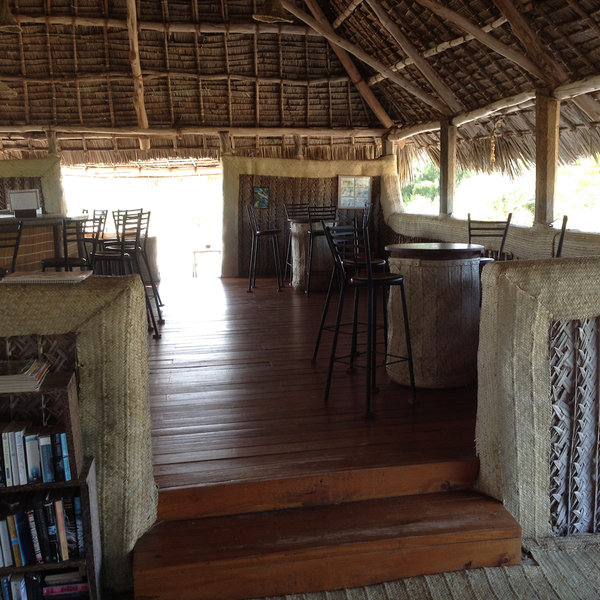
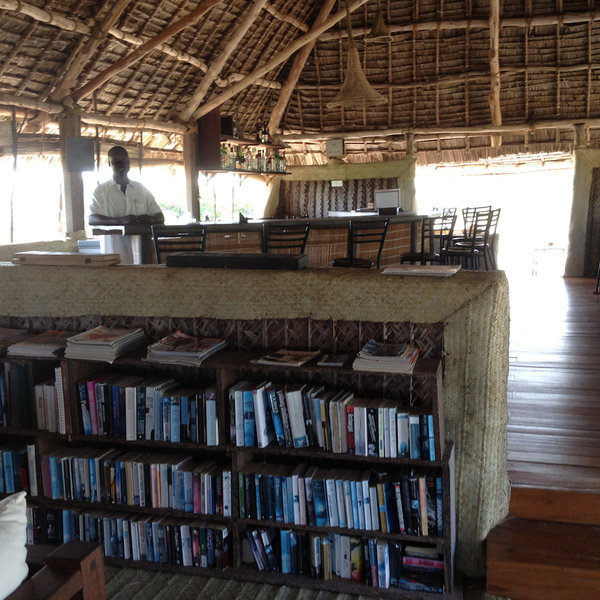
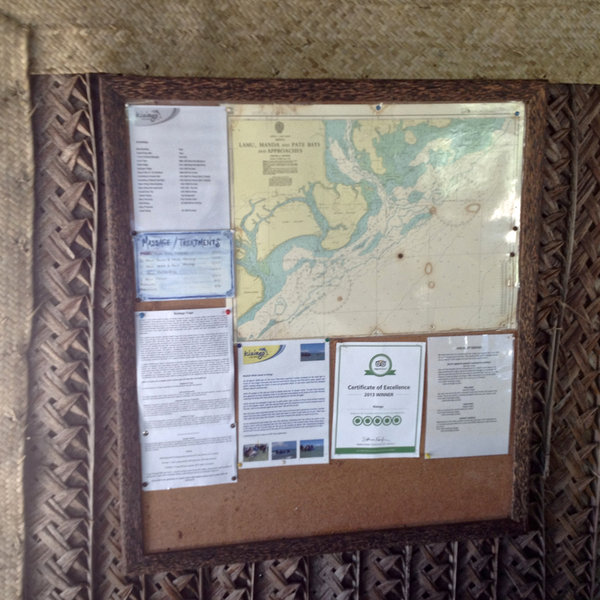
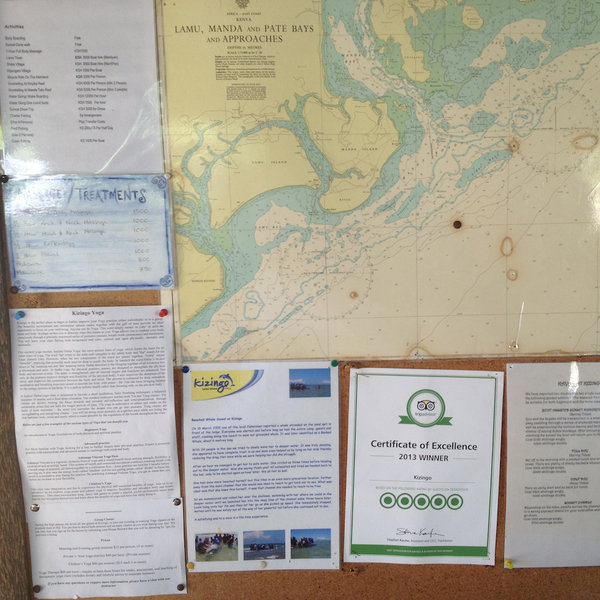
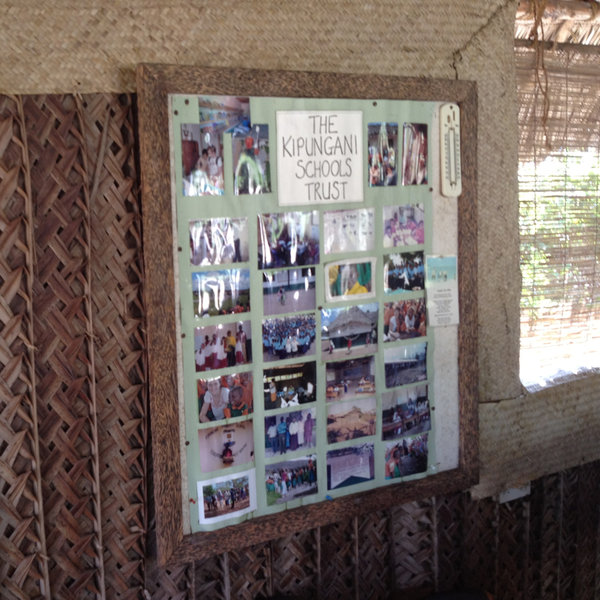
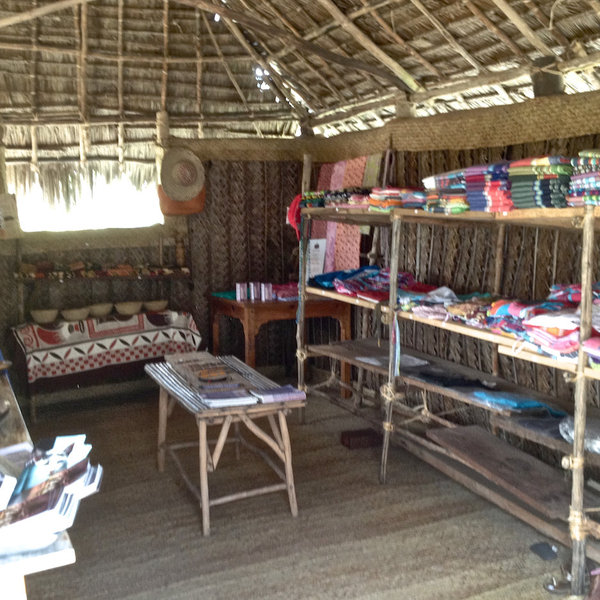
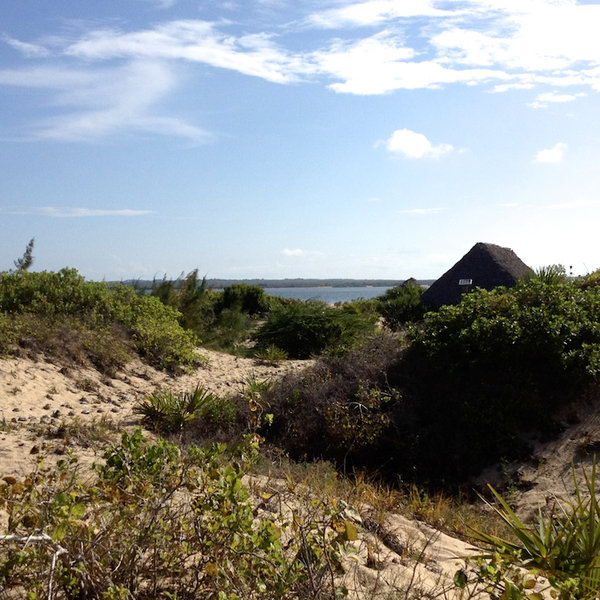
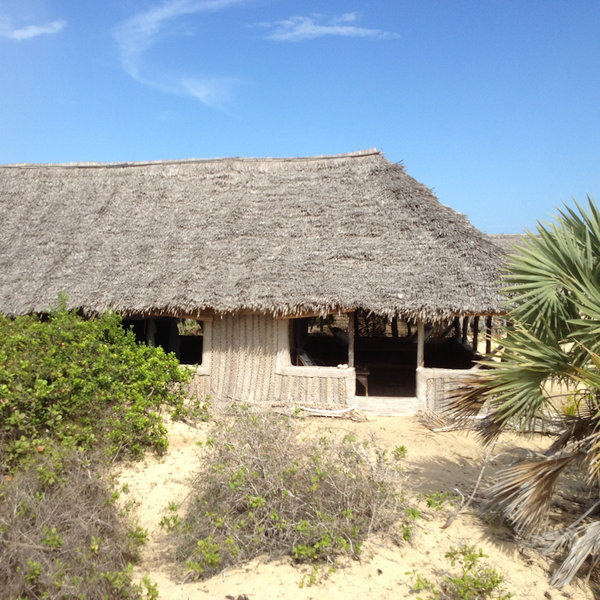
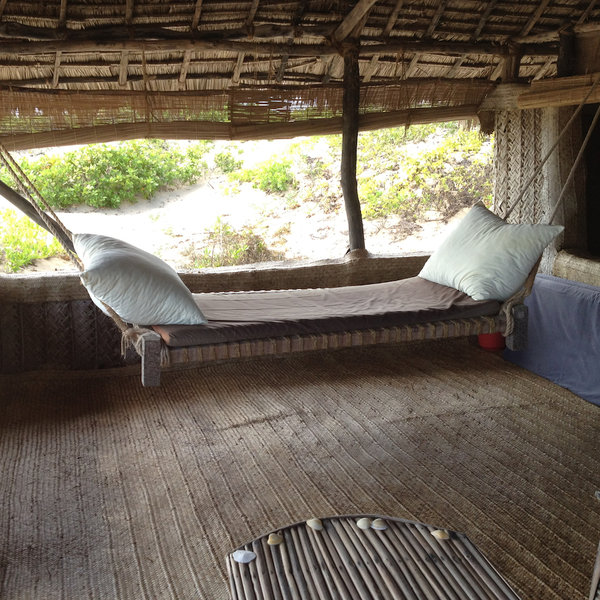
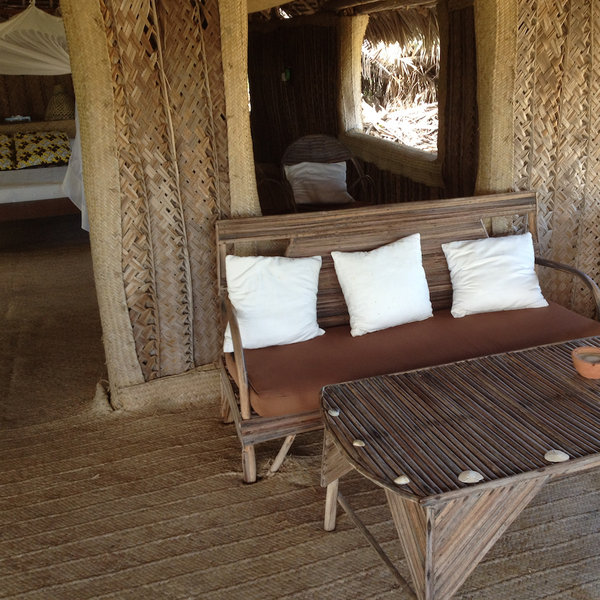
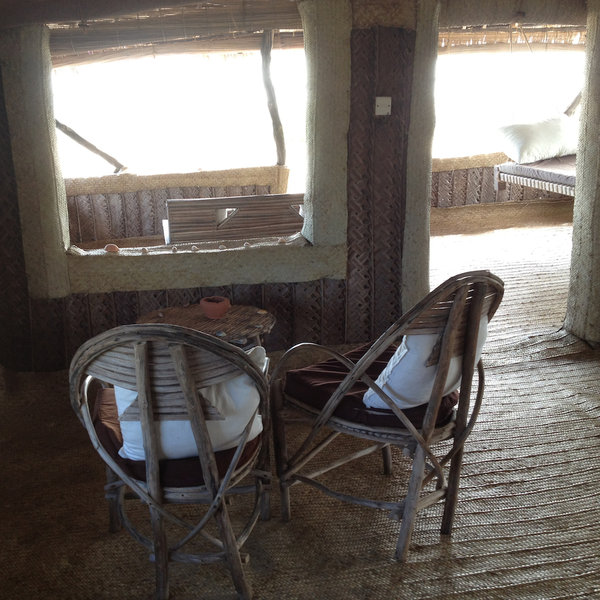
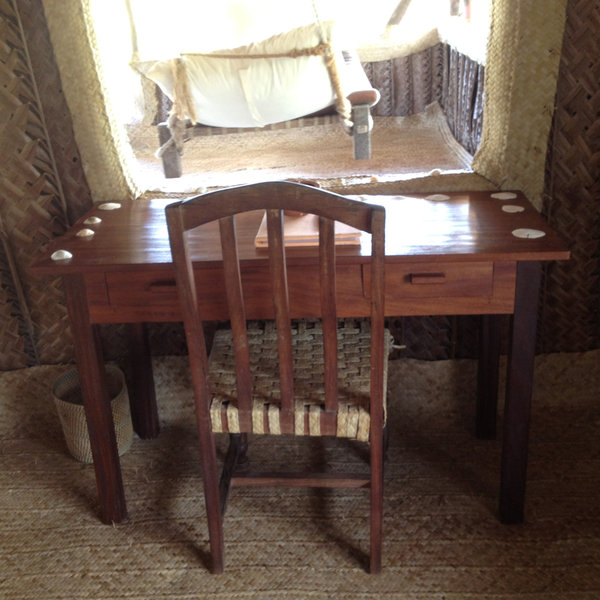
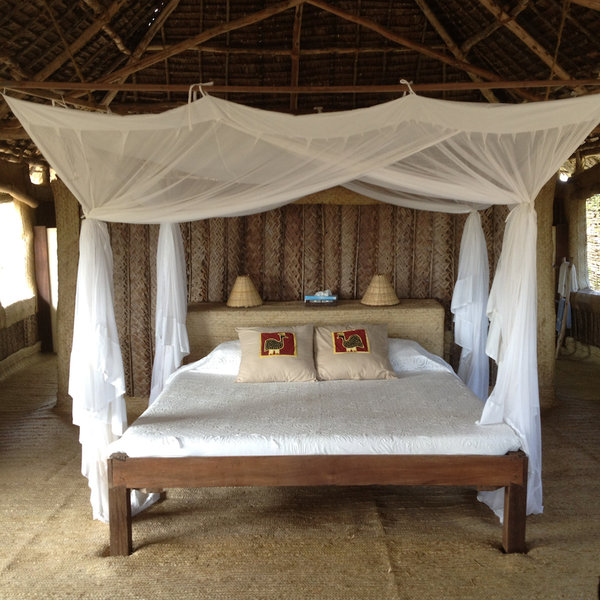
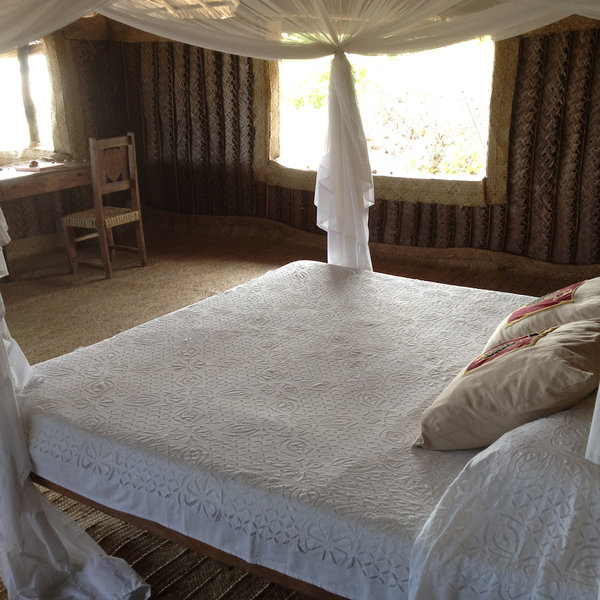
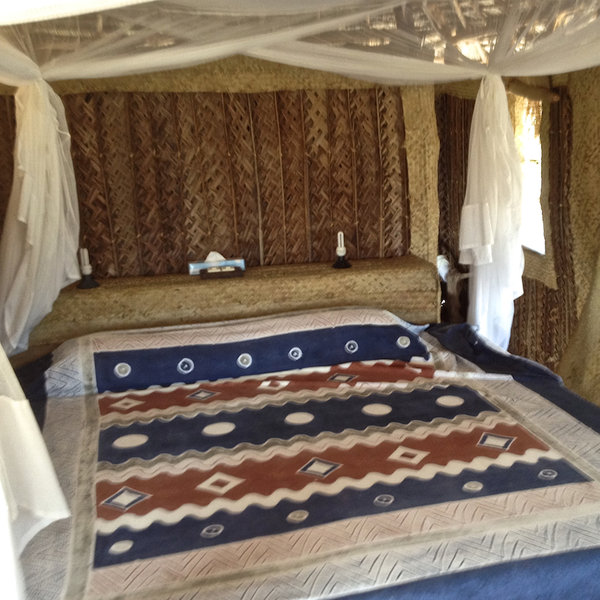
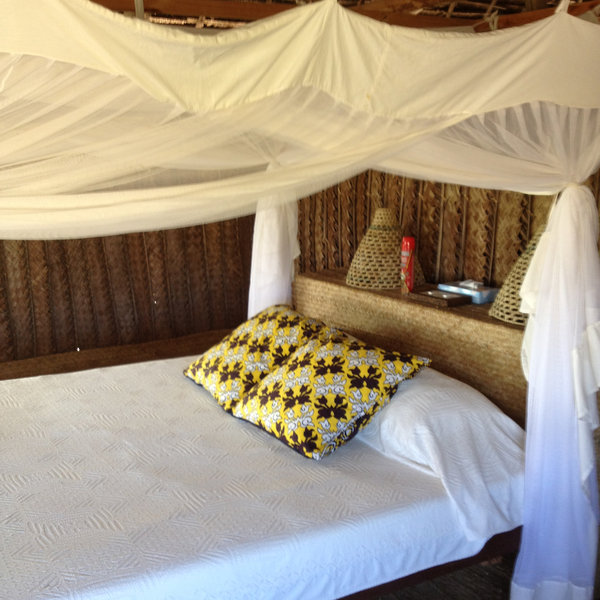
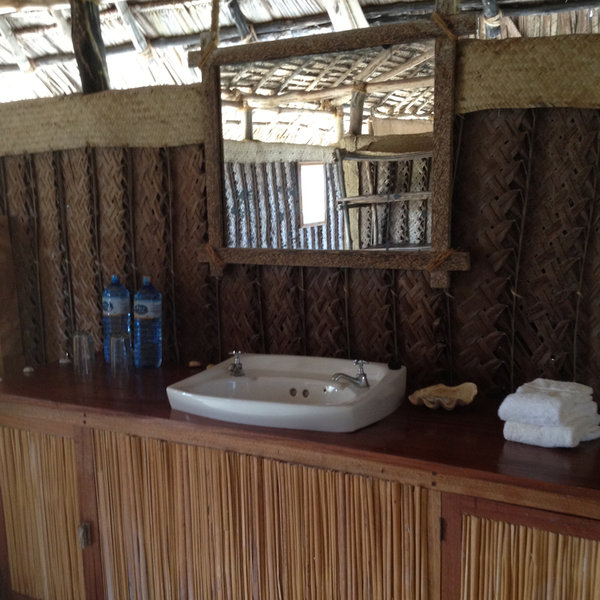
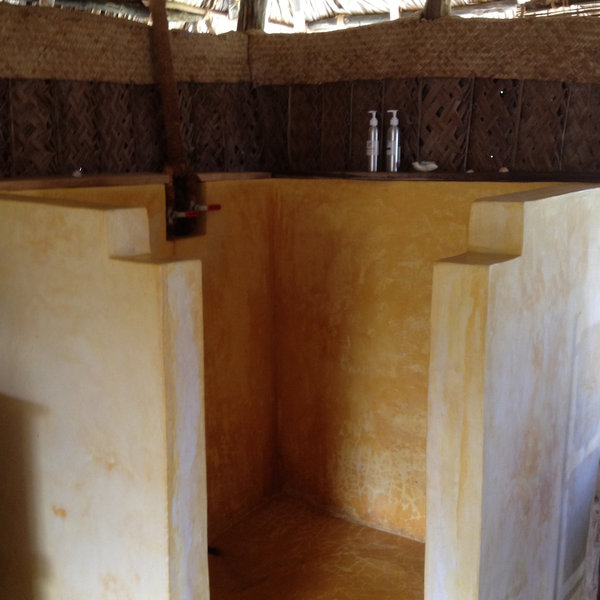
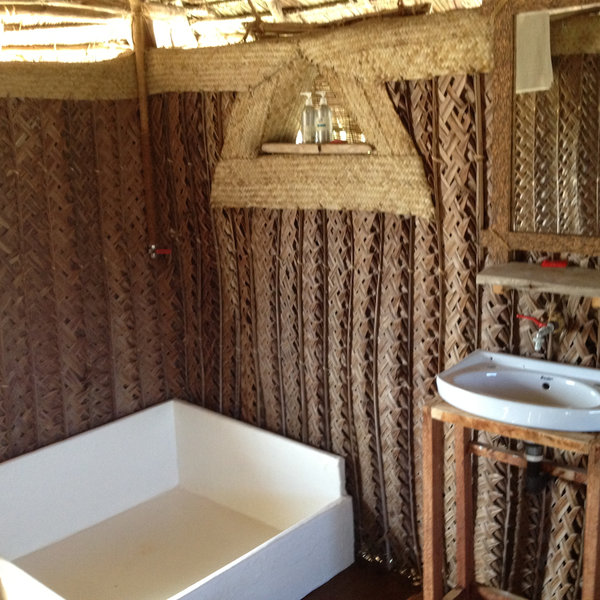
Expert Africa's gallery
When we travel we take lots of photos ourselves to give you a real and un-edited view of the holidays. See our 22 pictures of Kizingo to get the candid view.
View galleryKizingo: Our full report
On Lamu's extreme south-western tip, Kizingo (which means “point" in Swahili) is a simple beach lodge of ...
... palm matting and makuti thatch tiles on a large, 12-acre plot of sand dunes and scrub. Built in 2003 by the van Aardt family, and still owned by them, it's a deliberately informal and low-key setup.
People come to Kizingo to really get away from it all. Most beach lodges in Lamu offer a degree of barefoot escapism, but Kizingo is deliberately very low-key indeed. To a certain extent it's a labour of love, suiting the van Aardts as a place they cherish rather than as the fruits of a business plan.
You invariably arrive by water, picked up at Lamu airport by Kizingo's little speedboat and sped past the mangroves around the landward side of the island. Pulling onto the beach at Kizingo, you'll be in bare feet already, but you may want to be prepared with waterproof footwear as the sandy walk to the main part of the lodge can be very hot underfoot.
You'll be greeted with a drink and the most informal of introductions by Sammy, the manager, or one of the owners, in the main area for a briefing chats before being shown to your room. The guest cottages or bandas at Kizingo follow a similar construction to a number of similar beach lodges along Kenya's north coast. They're built around a framework of mangrove poles, between the sand dunes, and as the dunes are constantly moving, sometimes the bandas will be moved to accommodate. With tough matting of woven palm fibre sewn onto the frame to create the walls, and a steeply pitched roof of palm-leaf makuti tiles, the result is a thatched effect. Sometimes old makuti from the roof is laid out around the bandas to keep the sand down.
The glass-less “windows" are left open, facing out into the low scrub but there's no intrusion on privacy as the rooms are well spaced - and you can roll down the blinds if you want. There are no fans in the rooms and needless to say no air-conditioning – which is provided naturally by the near constant breeze of the monsoon winds. A veranda of wooden boards or a roofed porch area are provided with swing beds and seating. Inside, the centrally positioned beds have full-length mosquito nets (though rarely any need for them at this end of the island). The mattresses are foam rubber – not ideal, but apparently quite comfortable. Each room has a writing table and chair. The bathroom is located in an extension of the main building at the rear, and includes a basin on a cane washstand and a walk-in cement shower, or in some cases a simple shower base, with a plumbed-in water supply and a standard flush toilet. As you'd expect, toiletries come from Kenya's naturally sourced manufacturer, Cinnabar Green.
Five of the bandas are double or twin. There are two family rooms: number 7 is larger with an area for extra beds, and number 8 has a small second floor which would be ideal for two young children. There is a small, separate bathroom for the children.
Superb sunsets and sunrises are said to be typical of Kizingo, and having time to enjoy them is likely to be high on the agenda of most guests. Forgetting about work and the daily routines of life are part of the joy of being here – “no news, no shoes" as one guest aptly summed up the appeal. There's no swimming pool, either, which means you swim in the sea – gently bath-like here, where the creek enters the ocean – and it’s shallow neawr to the bandas, forming little pools. In this remote location, there are no beach boys to interrupt your progress across the beach.
If you want activities, there are some, notably swimming with dolphins roughly between November and April. Between October and June, green sea turtles choose some of the beach areas as nesting sites and you may be able to watch them laying. Approximately 45 to 75 days later the turtlets break out and flap down the beach into the ocean – and again you may be lucky enough to have a chance to witness this.
You can fish from the beach, kayak, kitesurf (best from January to April and from July to October) and snorkel (best from November to April). At extra cost, Kizingo can also organise water-skiing, boat trips to see dolphins and deep sea-fishing during the season (from November to April), when humpback whales are sometimes spotted.
There are close links with the Kipungani community, and guests can usually arrange to visit the school.
Finally, if all that activity has tensed you up, Kizingo has a resident masseuse and small shop to peruse.
Activities
Birdwatching
Boat trip
Scuba-diving
Snorkelling
Watersports
Families & children
- Attitude towards children
- Children are welcome.
- Property’s age restrictions
- None,
- Special activities & services
- There are cots available. Lifejackets and bodyboards are available.
- Generally recommended for children
- Kizingo is probably best for teens or older.
- Notes
- With no pool and a fairly adult environment, there's not enough to keep younger children occupied here without needing parental involvement. The lodge tells us that many 5-10 year olds stay though.
Food & drink
- Usual board basis
- Full Board
- Food quality
- Meal times can be flexible and meals can be served anywhere. Solo travelers will often be hosted if they request it. The day starts with a morning wake-up call and tea or coffee (on request). Breakfast, generally served from 8am until 10am, will always include fresh fruit and the option of a cooked breakfast to order. Lunch is cold, a three-course meal, served by the waiting staff from 1pm until 2pm. Tea is served in the afternoon for those who want it and dinner is from 8pm. It very often includes local seafood (there will be a catch of the day whenever possible), Kizingo's own chickens and home-grown salad crops.
- Dining style
- Individual Tables
- Dining locations
- Indoor and Outdoor Dining
- Further dining info, including room service
- You can have your meals at your banda if you choose.
- Drinks included
- Drinks are not included, but prices are deliberately quite reasonable, with beers and house wine by the glass at about US$3-5, sodas US$2 and a gin or vodka and mixer around US$3. Wines by the bottle range from around US$15-30 and cocktails are about US$7.
Getting there
- Location
- Kenya Coast, Kenya
- Ideal length of stay
- At least 3 nights.
- Directions
- Kizingo is on the extreme southwest tip of Lamu island, about 30 minutes by speedboat from Lamu airport, via Lamu creek, between the island and the mainland.
- Accessible by
- Fly-and-Transfer
Communications
- Power supply notes
- Solar panels provide much of the energy, but a generator is turned on for 3 hours in the morning and 4 hours in the evening, to provide for the bar fridge and freezer. There is power for lighting in the rooms at all times, but charging of batteries is done in the bar area. Solar heated water is available most of the day.
- Communications
- Wi-fi is available throughout the lodge for those who ask for it, via a password-protected dongle for each banda. Mobile phone network coverage is good.
- TV & radio
- A plan can always be made if guests need to watch something important.
- Water supply
- Borehole
- Water supply notes
- The bathrooms are fully plumbed, with the exception of a long drop loo in the children’s bathrooms. A bottle of drinking water is supplied in each banda every day.
Health & safety
- Malarial protection recommended
- Yes
- Medical care
- The manager and one member of staff are first-aid-trained. The boats always have a first aid kit. Lamu town has the nearest medical assistance at hospitals and clinics. Helicopters can land near the lodge.
- Dangerous animals
- Low Risk
- Security measures
- There is a good contingent of askaris on duty all day and night.
- Fire safety
- There are sand buckets in all the cottages and fire extinguishers by the fuel store.Staff are fire-trained. The assembly point is the beach.
Useful info
- Disabled access
- On Request
- Laundry facilities
- Laundry can be done for a small extra charge, but underwear can’t be accepted. Clothes are hand-washed, line-dried and ironed.
- Money
- A safe in the office is available for valuables.
- Accepted payment on location
- All major currencies (US dollars, Euros, Kenyan shillings, pounds sterling) are accepted for cash settlement of bills. Visa and MasterCard credit cards are also accepted, with no surcharge.
Plan and book your trip with Expert Africa
All of our trips are tailor-made, so we'll always adapt them to suit you. Talk to an Expert and let us plan and arrange your perfect trip.

Talk to an Expert
Call or email us now! We’ll match you with the Specialist in our team who is best suited to help you. Then together we can start planning your trip.

Set up your itinerary
Based on our experience and your ideas, your specialist will create a detailed, costed itinerary. We’ll refine it together, until we have a trip that you’re perfectly happy with.

Prepare for your trip
The same Specialist will make the seamless arrangements for your trip, send you detailed travel documents, and be available to answer any questions before you depart.

Travel with peace of mind
After you set off, you’ll be cared for by our partners in Africa, most of whom have worked with Expert Africa for decades. And if you ever need us urgently, we’re available 24/7.

When you return
We love to learn about your trip, and so will always be grateful if you’ve the time to give feedback to your Specialist when you return.
Kizingo's location
Look closer at the environment and surroundings of Kizingo.
Other lodges in Kenya Coast
Alternative places to stay in this same area.
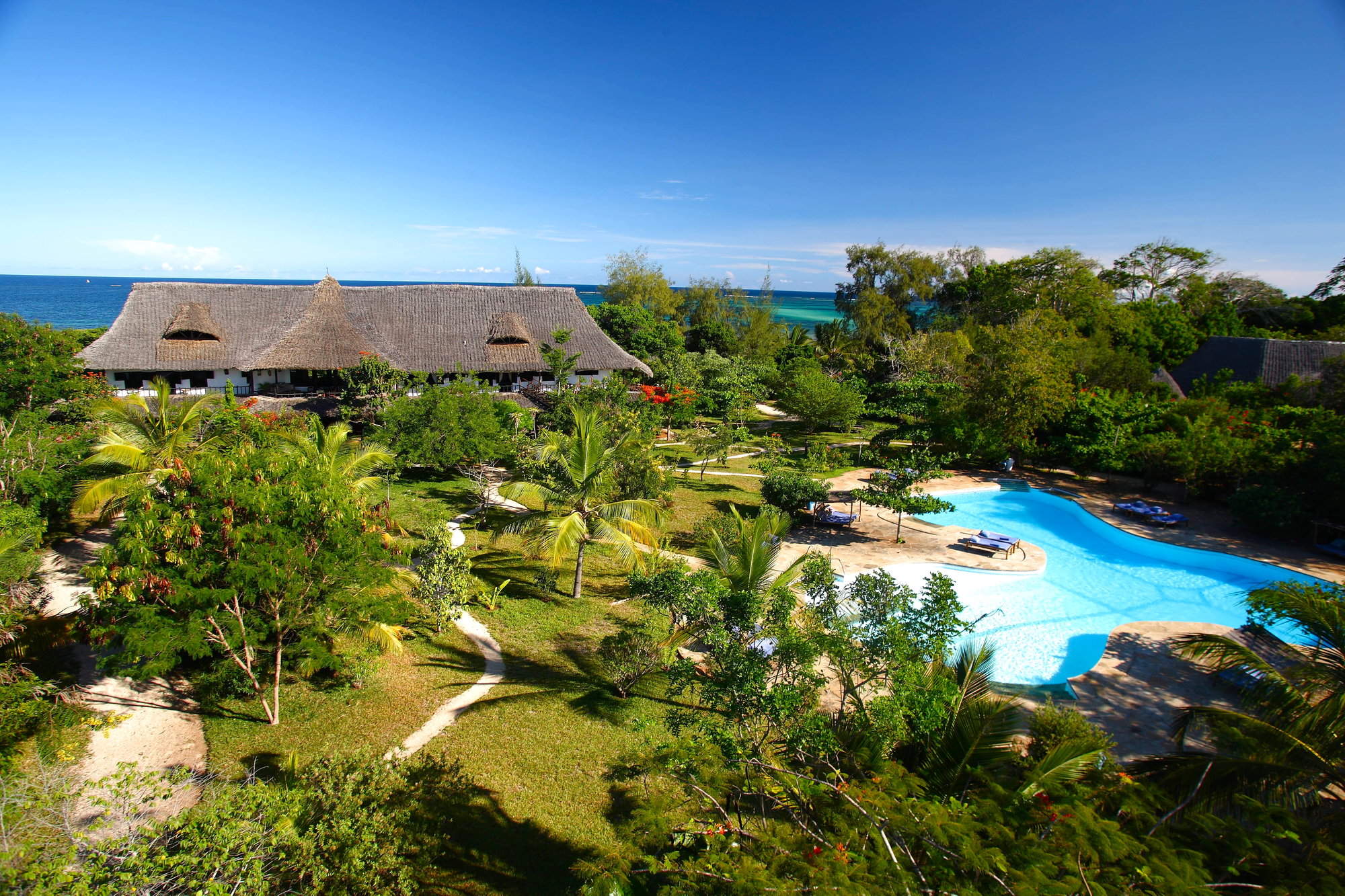
Kinondo Kwetu
Kinondo Kwetu is a small, owner-run, all-inclusive boutique lodge of exceptional quality situated on a remote stretch of beach south of the busier Diani Beach area.
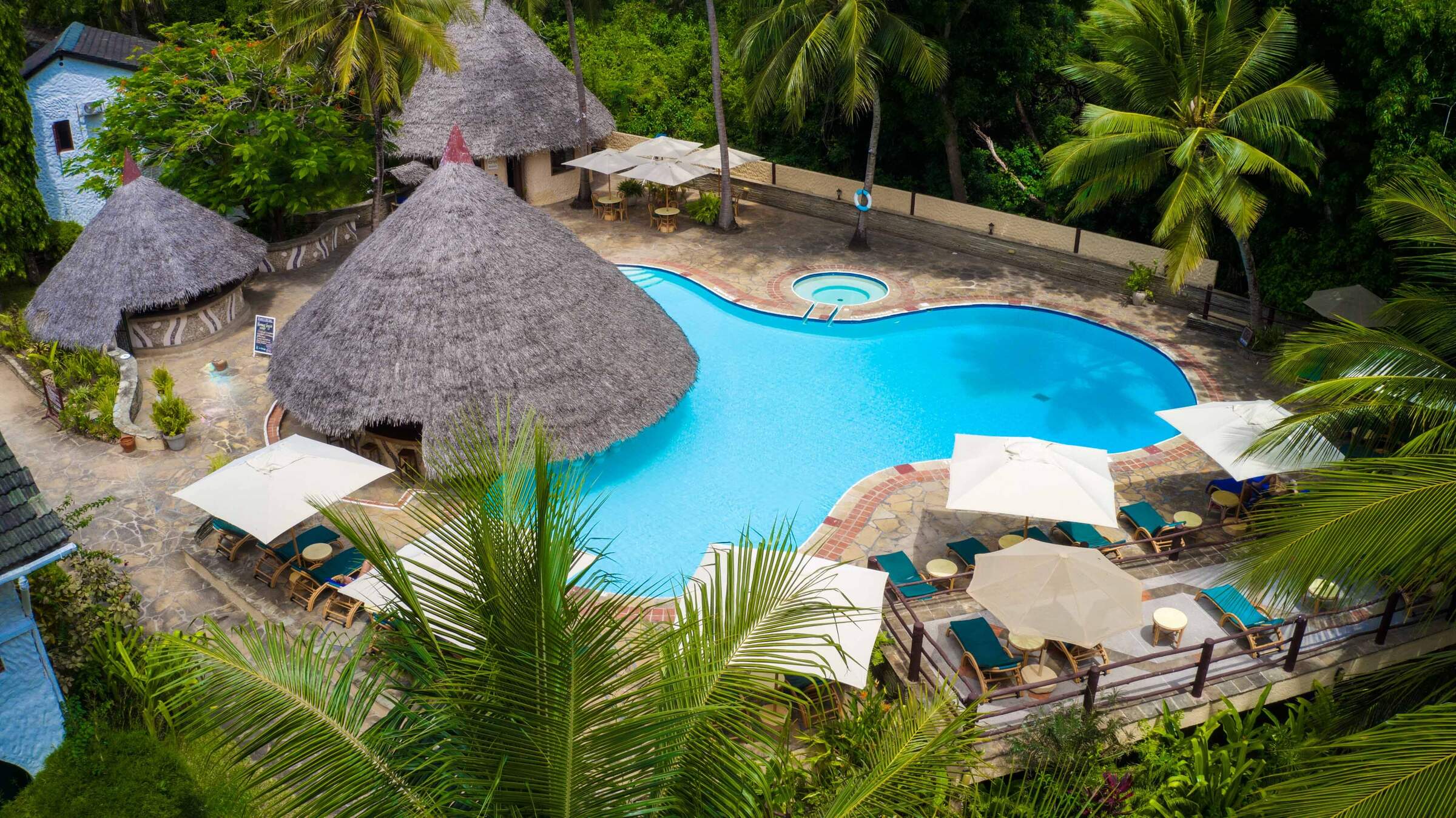
Pinewood Beach Resort
Pinewood Beach Resort is a relaxed resort-style hotel at the far south end of Diani Beach - an area known as Galu Beach.
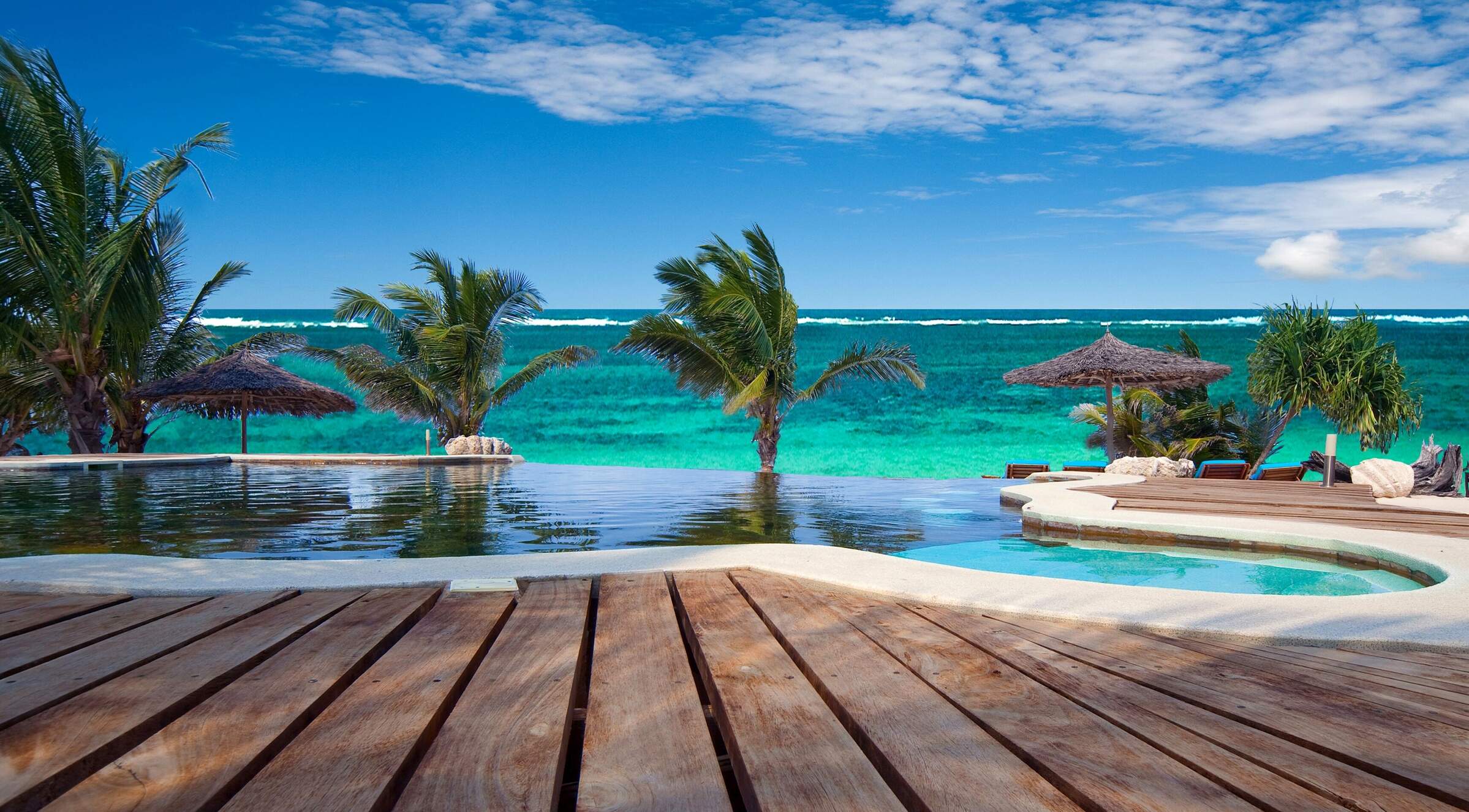
Water Lovers
Water Lovers is a popular, low-key beach hotel in a central location on Diani Beach on the south coast of Kenya.
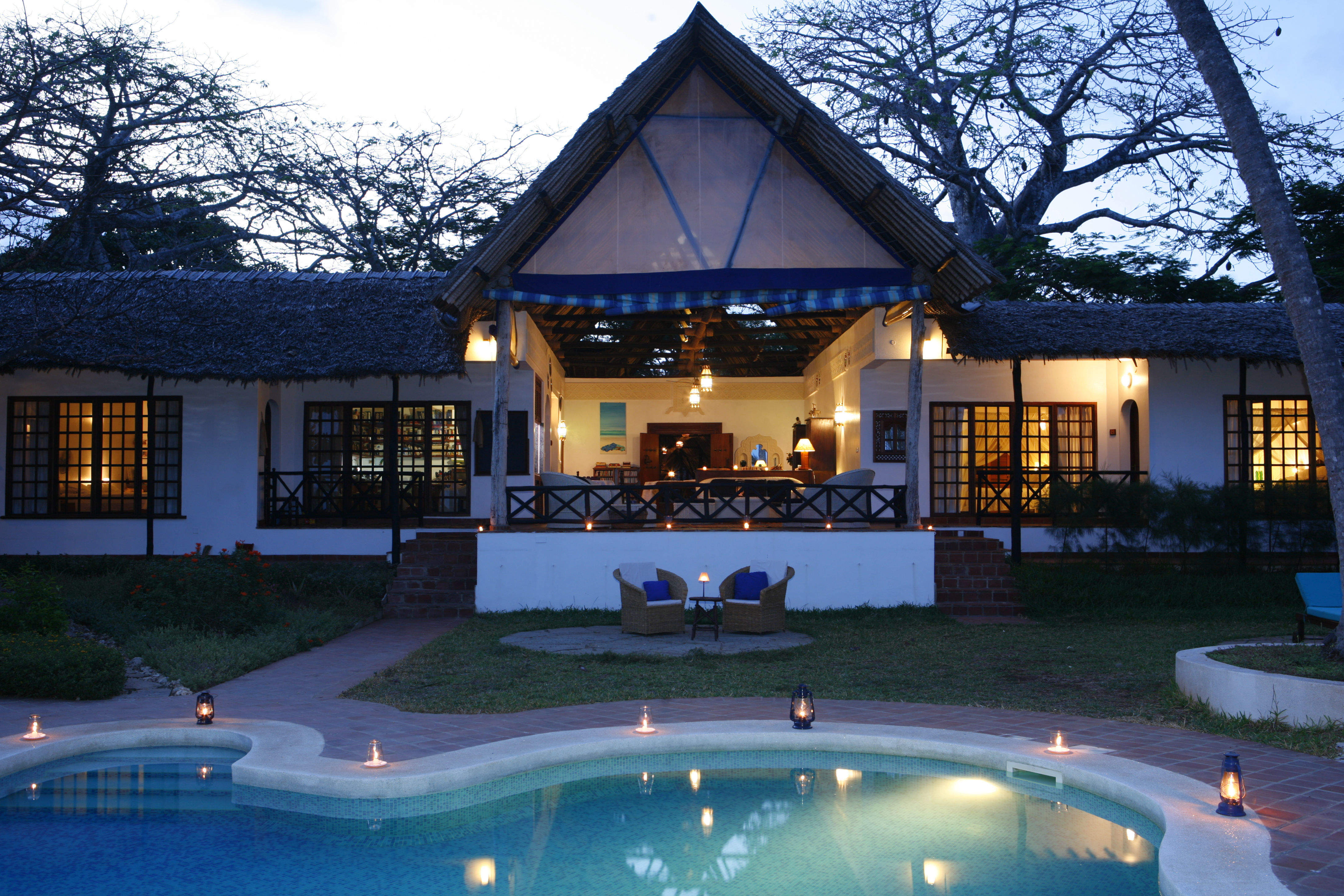
Asha Boutique Hotel
Diani Blue is a low-key but stylishly comfortable small guesthouse, with high levels of service, in a busy, central part of Diani Beach.
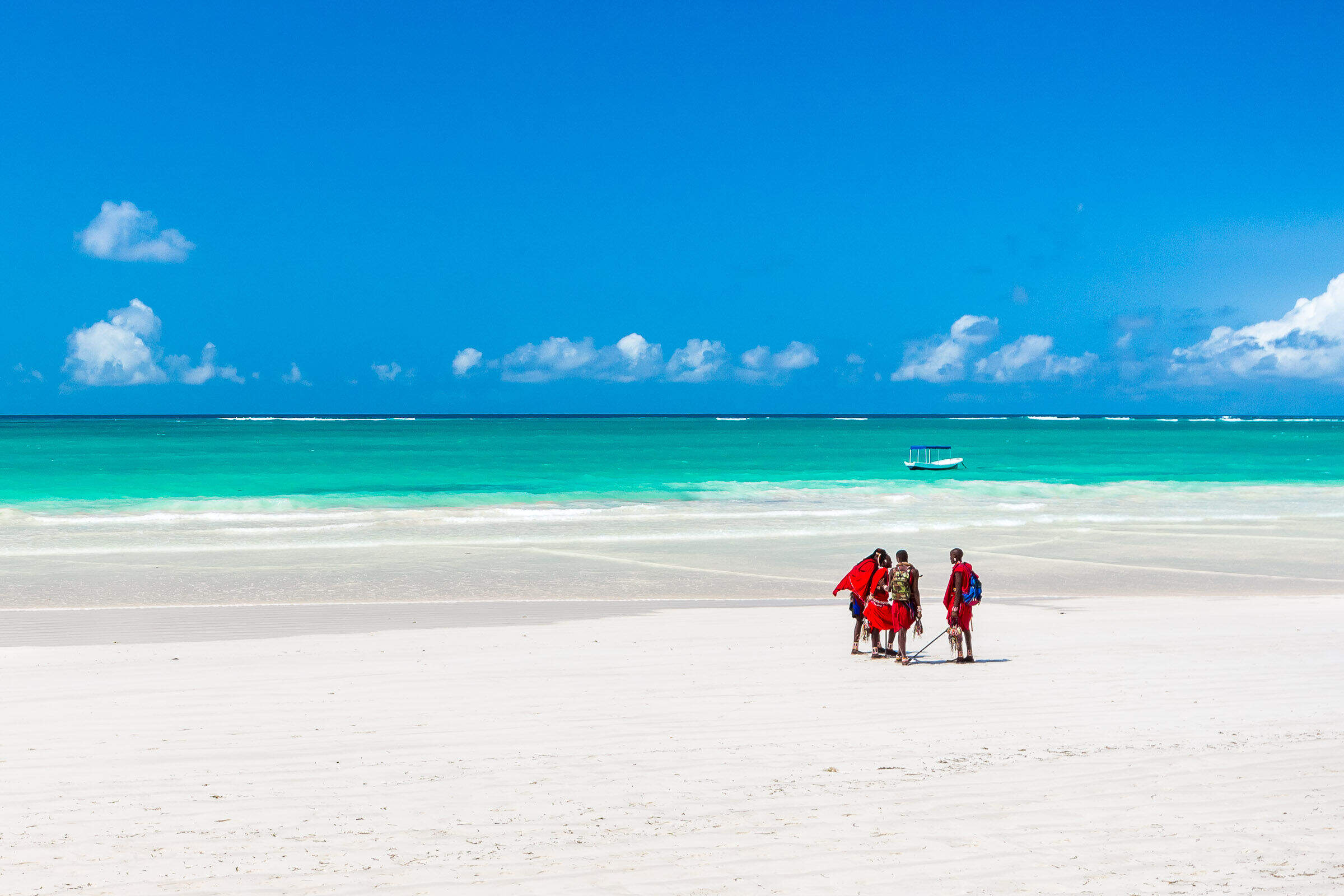
The Sands At Nomad
The Sands At Nomad is a good-value, laidback, family friendly resort with lots of Swahili character.
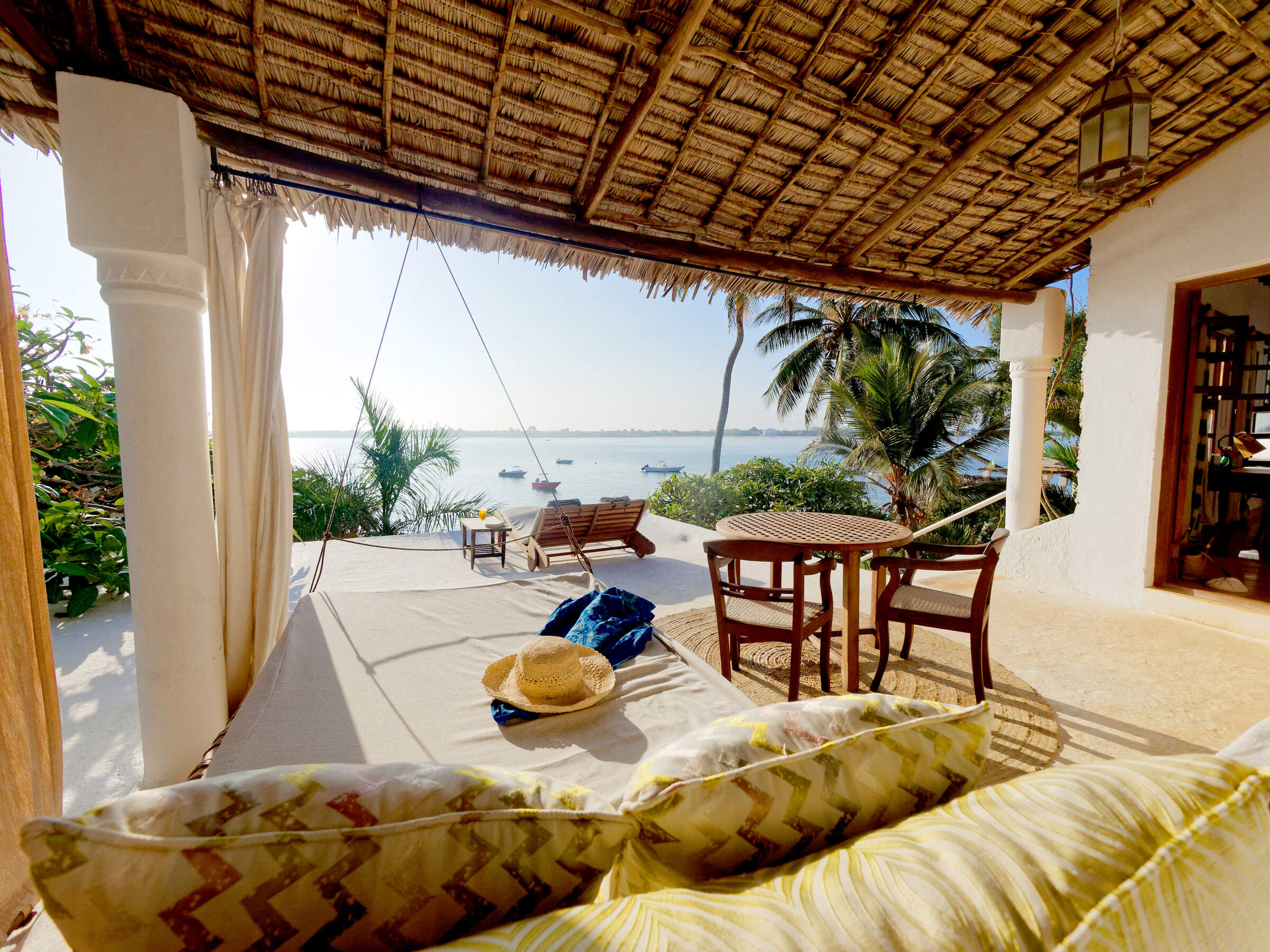
Peponi
Peponi is a long-established beach hotel, renowned for its good food, located in the village of Shela on the south side of Lamu island.
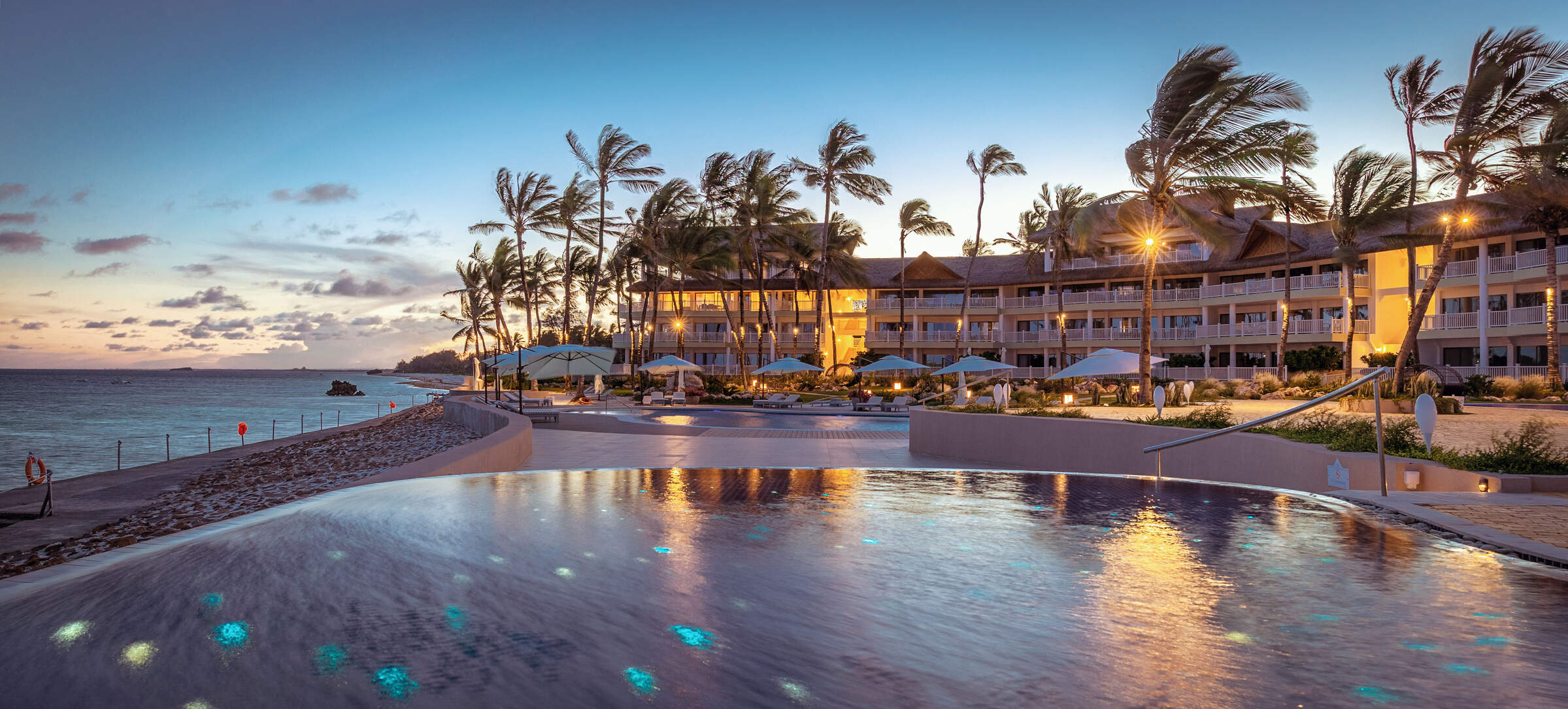
Hemingways Watamu
Long-established resort hotel with a strong British following and a good reputation for deep-sea fishing.
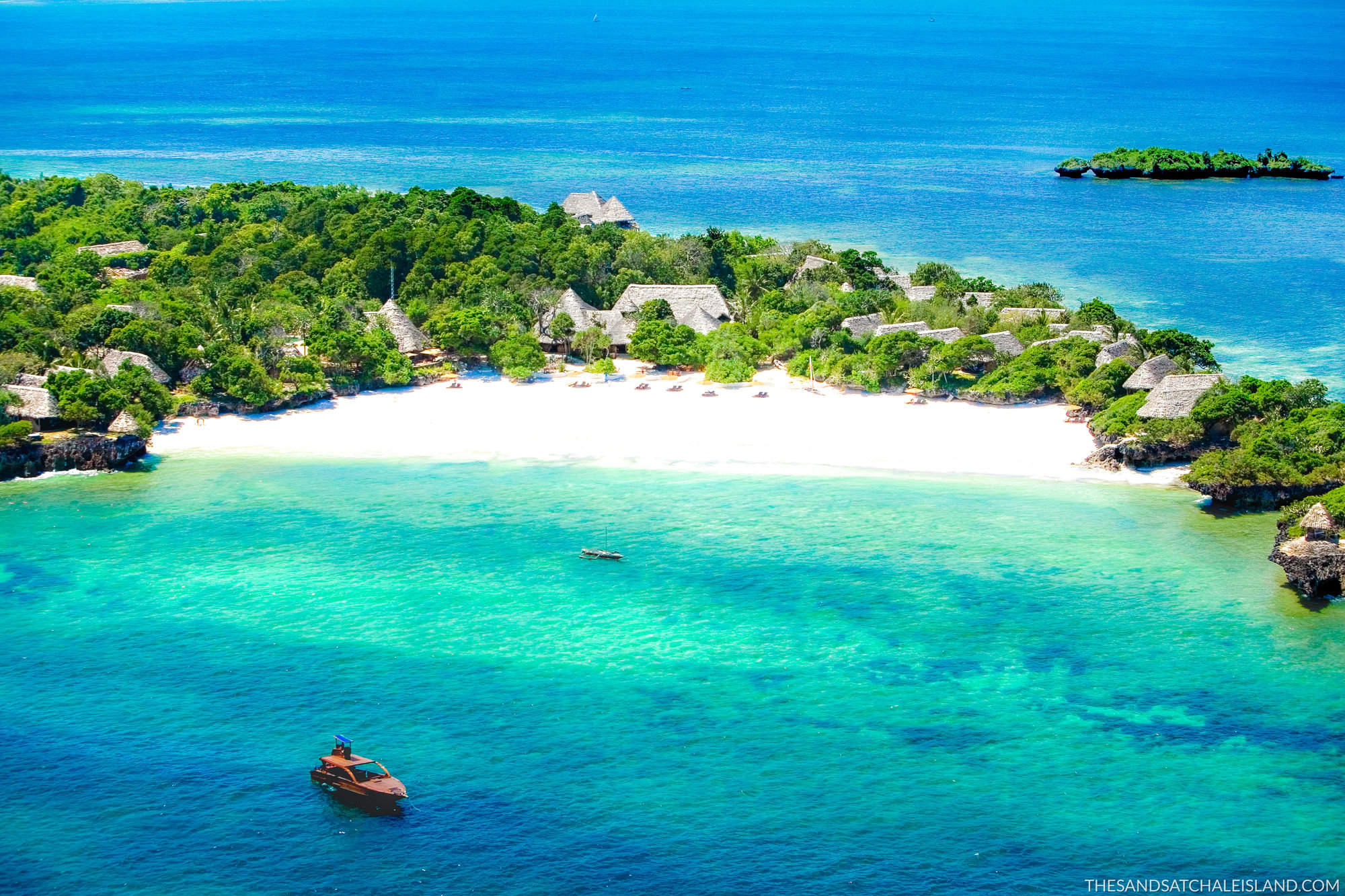
The Sands at Chale Island
The Sands at Chale Island is a beach resort offering plenty of activities and beautiful flora and fauna all around.
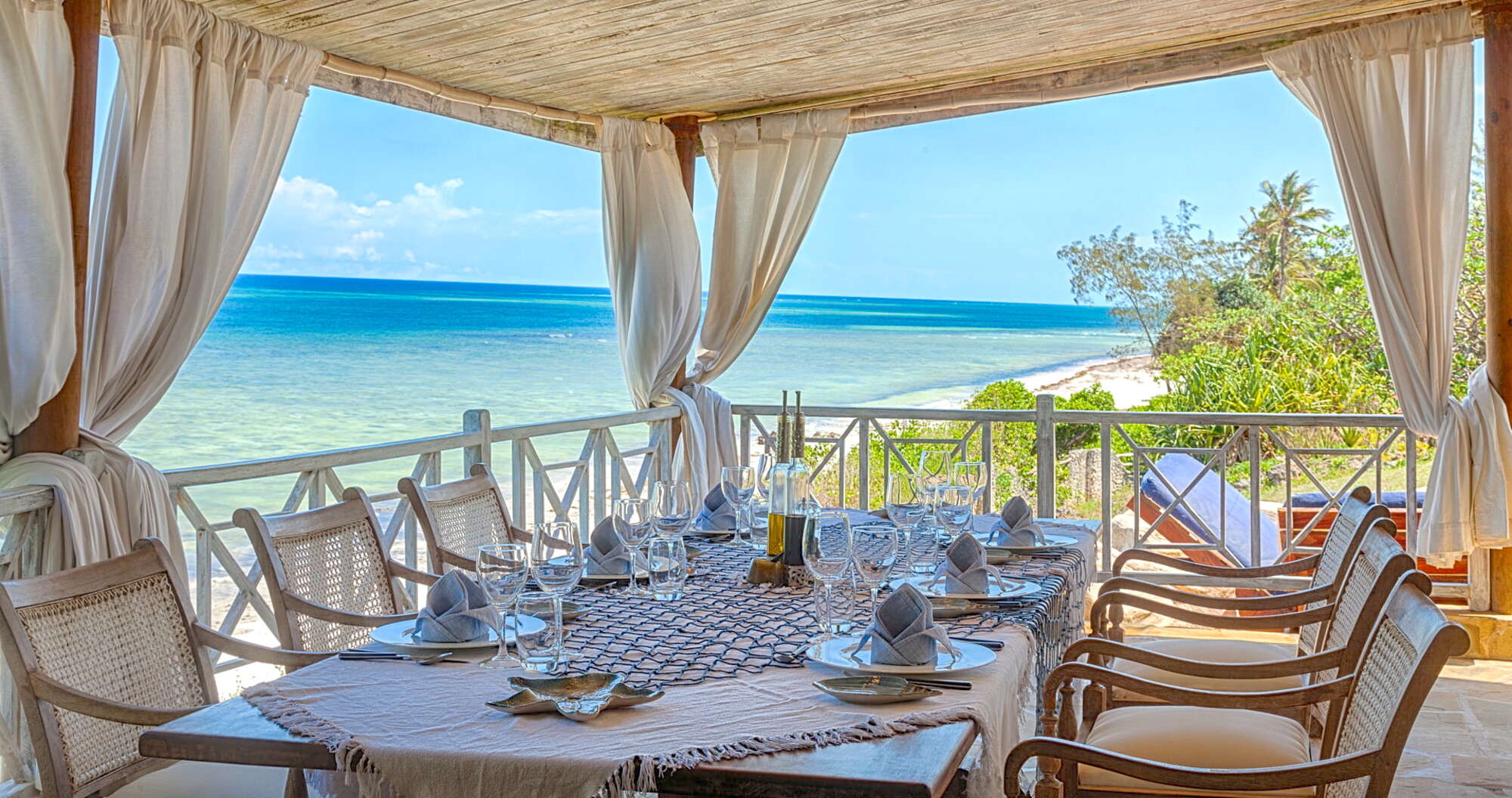
Alfajiri Villas
Alfajiri Villas is an exclusive, owner-run, hideaway property consisting of three unique villas in a central part of the north end of Diani Beach.
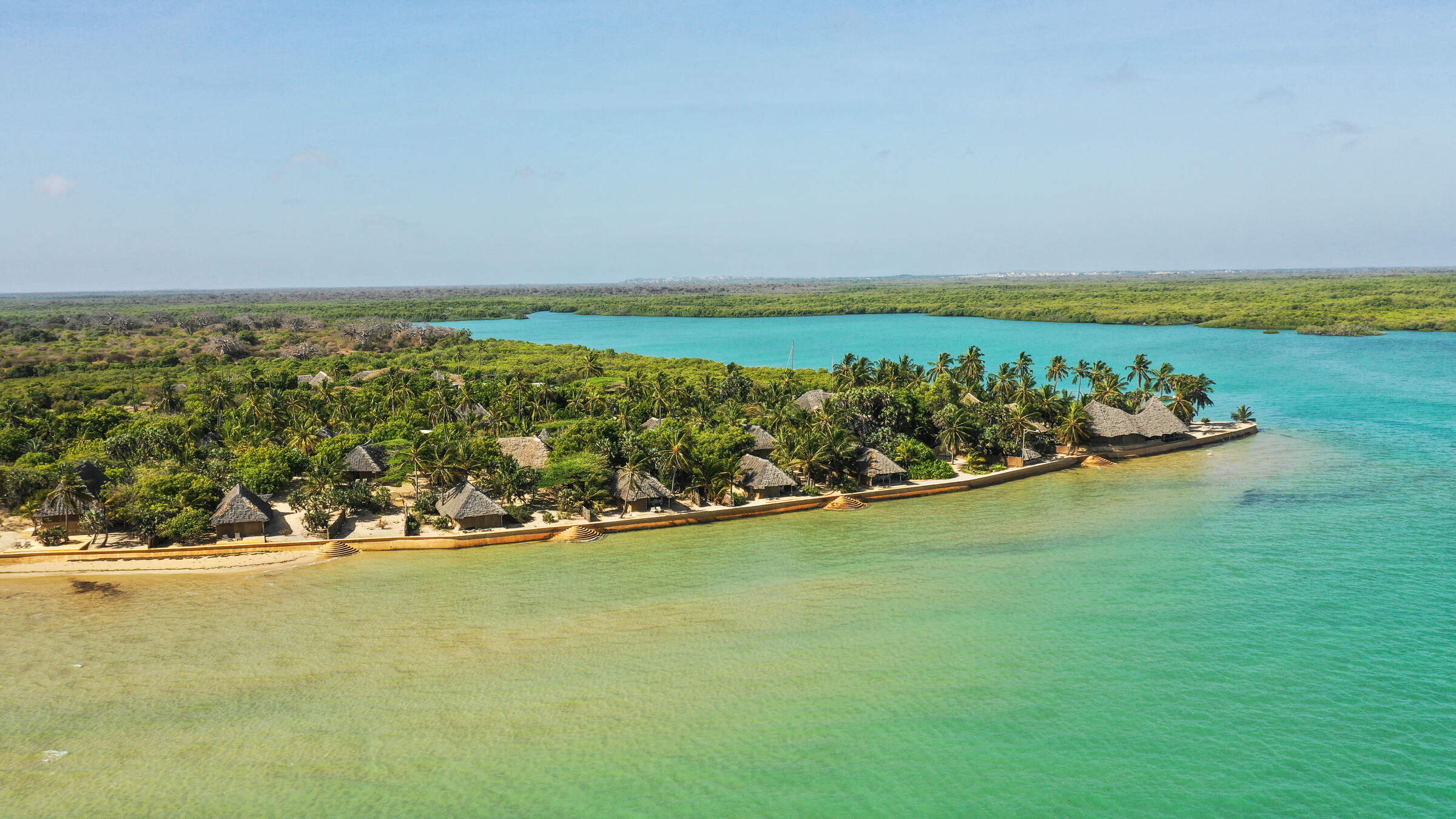
Manda Bay
Manda Bay is a luxury beach hideaway in a remote corner of an island in the Lamu archipelago, on Kenya's northern coast. It has a huge range of water sports on offer.
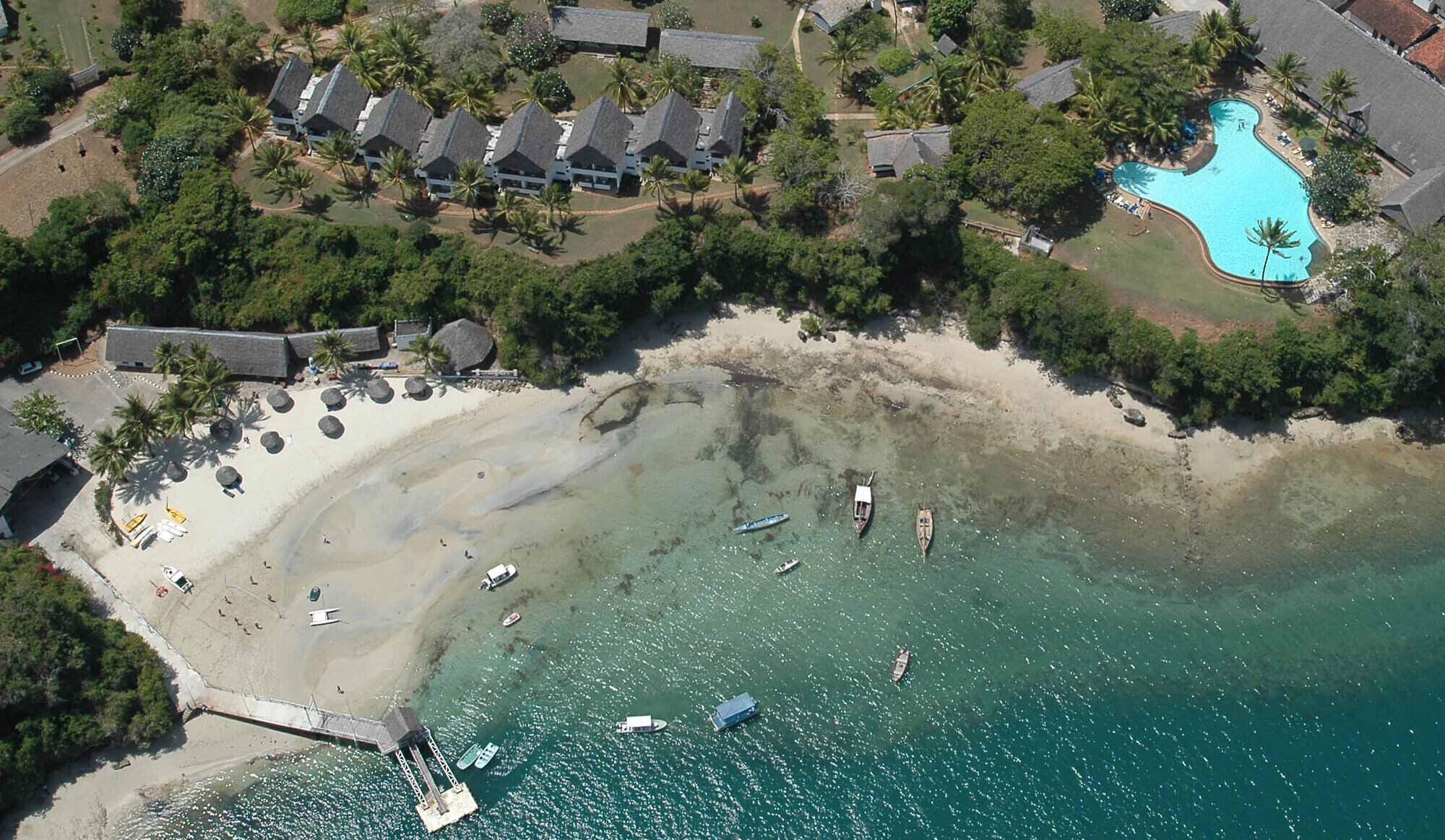
Mnarani Club
The Mnarari Club is located towards the seaward end of the beautiful Killifi Creek, and is an enduring favourite on the Kenya coast.
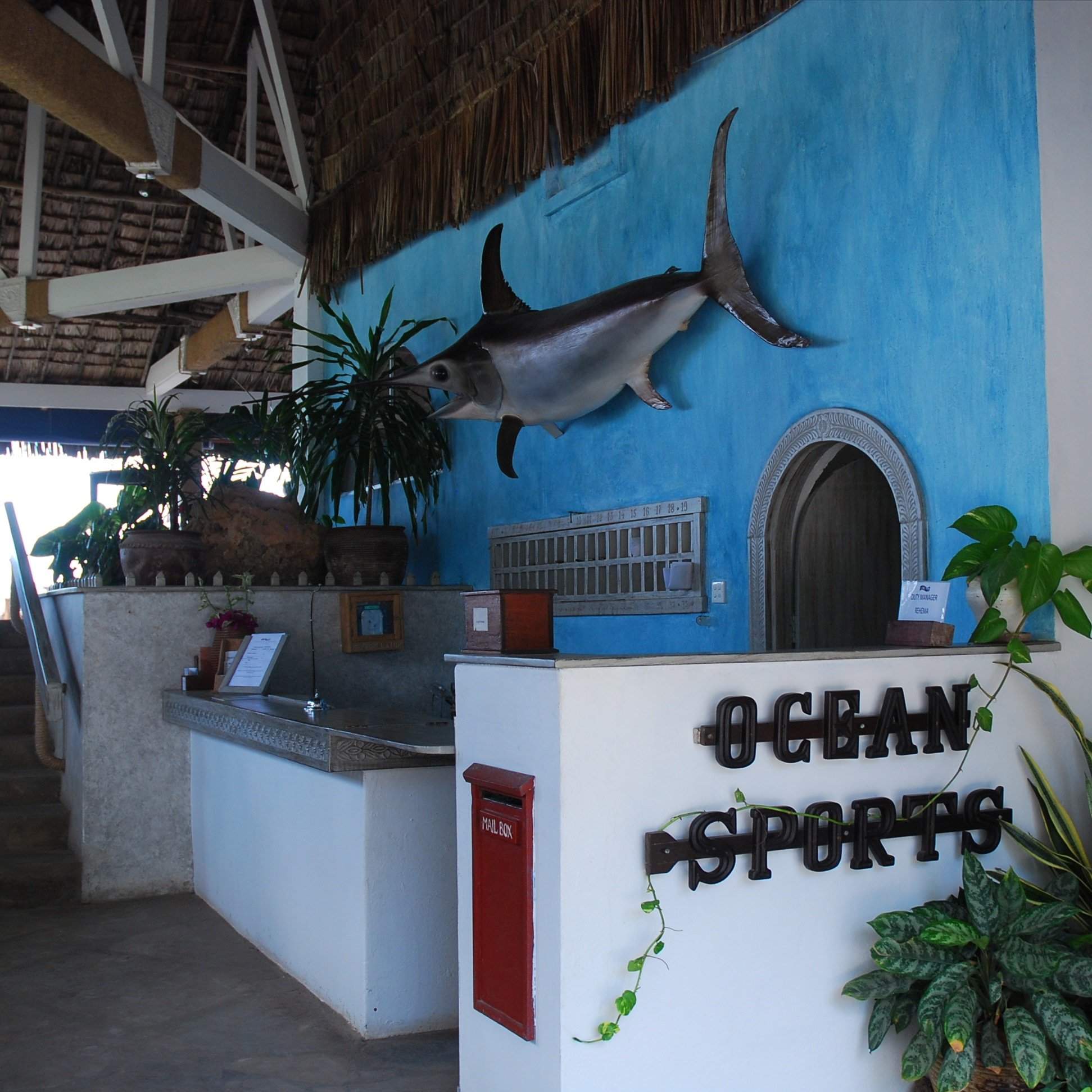
Ocean Sports
Ocean Sports is long-established and popular beach hotel right on one of Watamu's famous and beautiful bays.
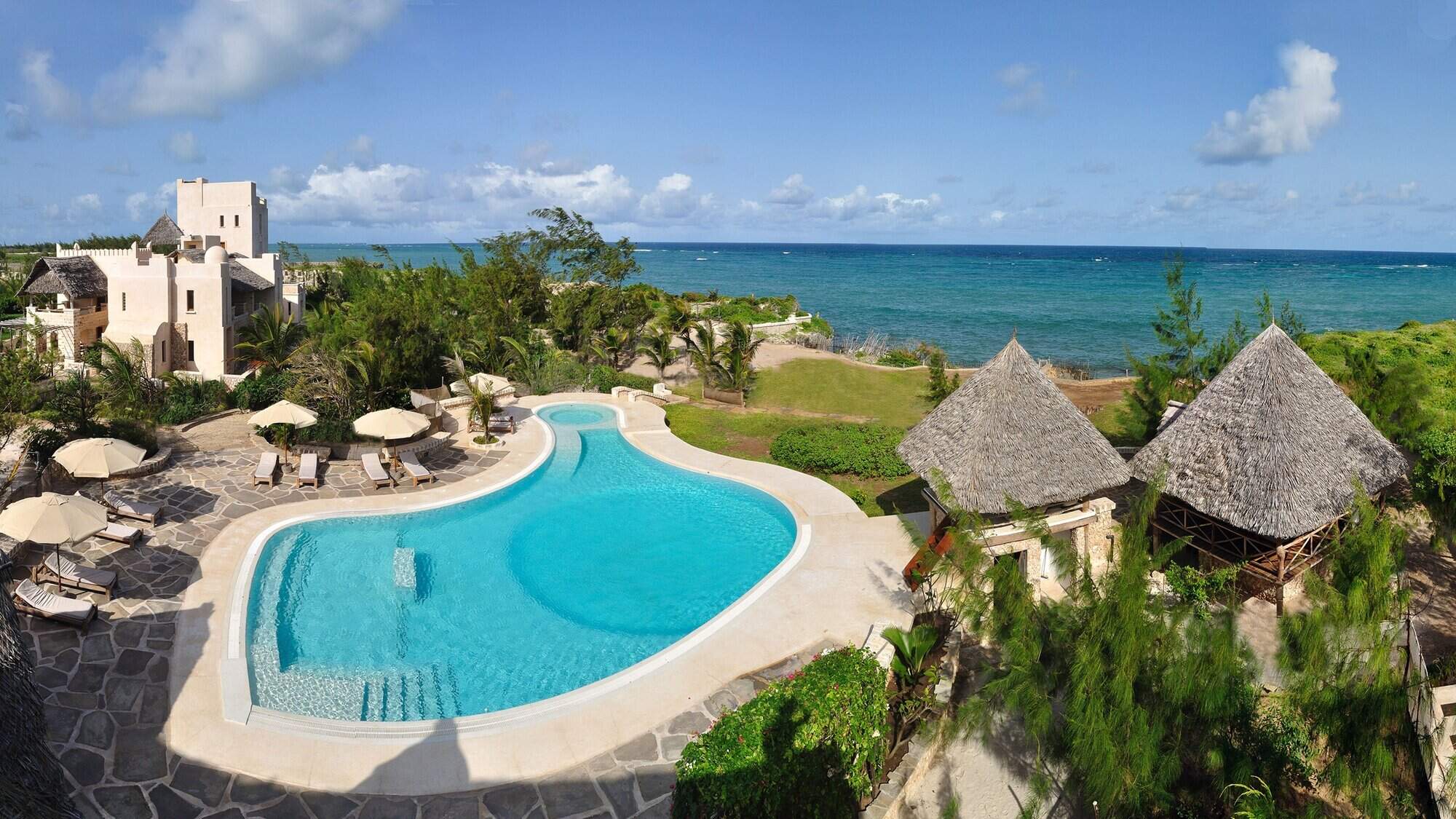
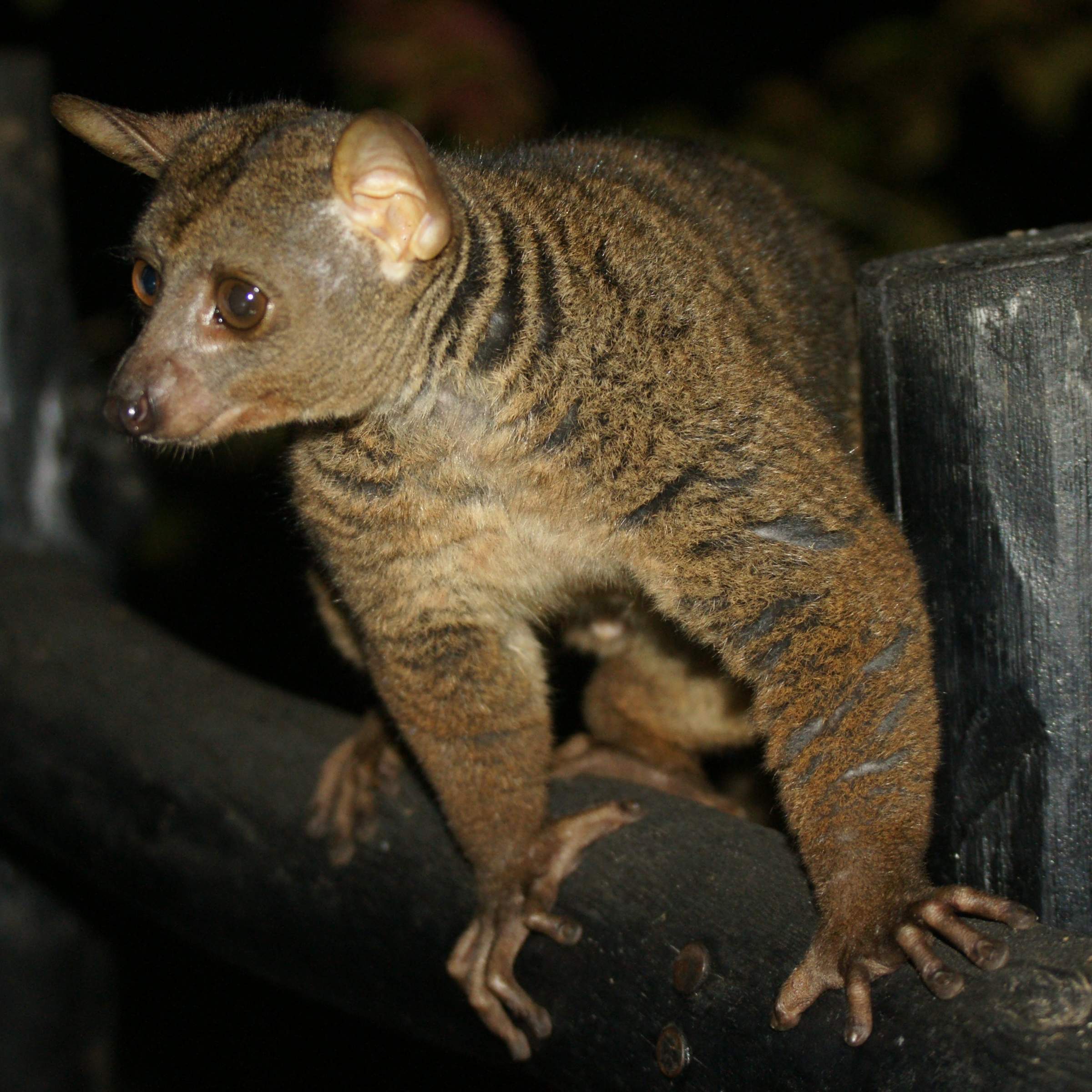
Shimba Lodge
Shimba Lodge is a picturesque tree-hotel overlooking a forest waterhole in Shimba Hills National Park, with an aerial walkway and abundant wildlife.
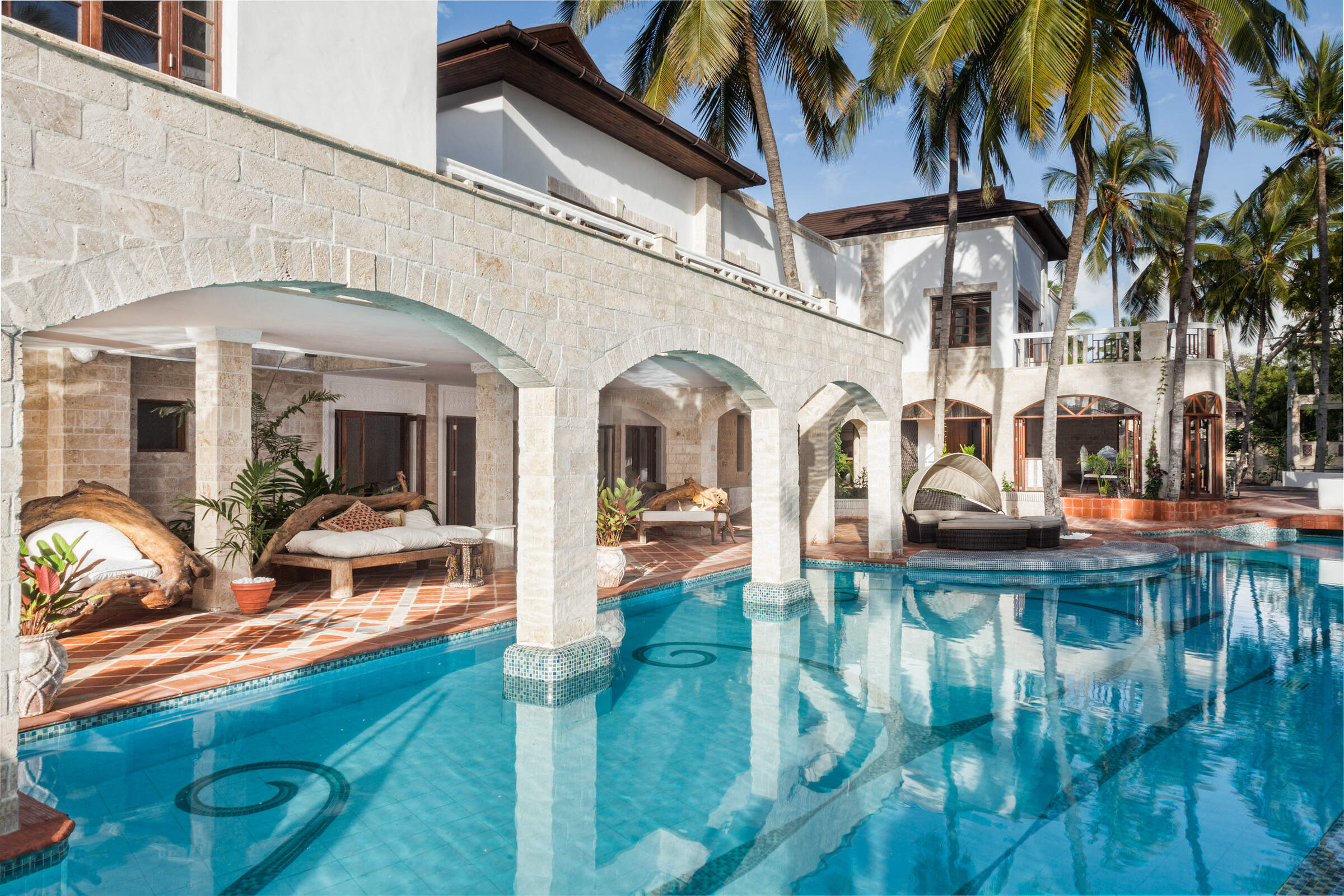
The Maji
The Maji is a small, well managed beach hotel on the northern stretch of Diani Beach in southern Kenya.
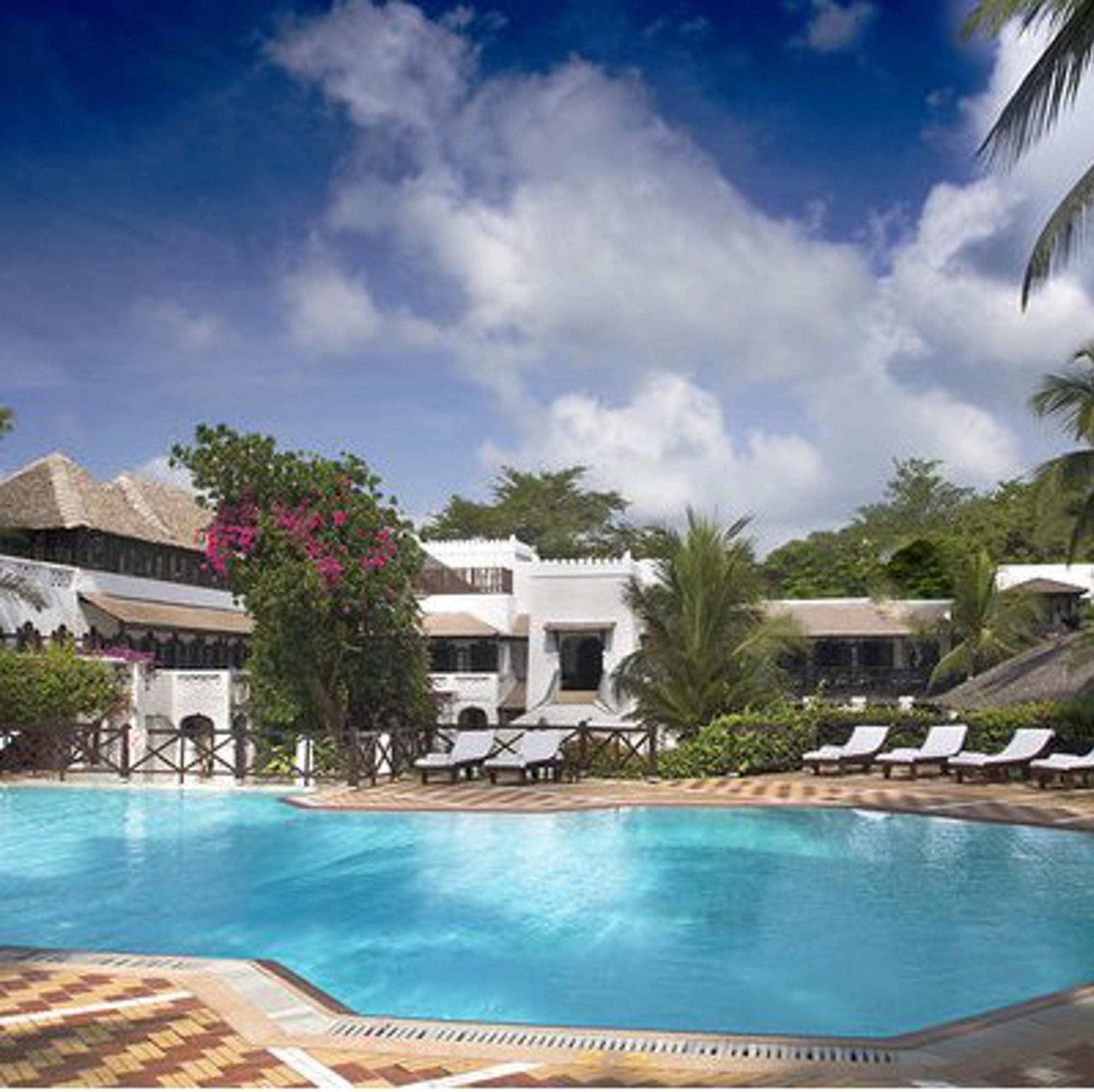
Serena Beach Resort
Serena Beach Resort is a large beach hotel on Shanzu Beach, north of Mombasa town, on Kenya's Indian Ocean coast.
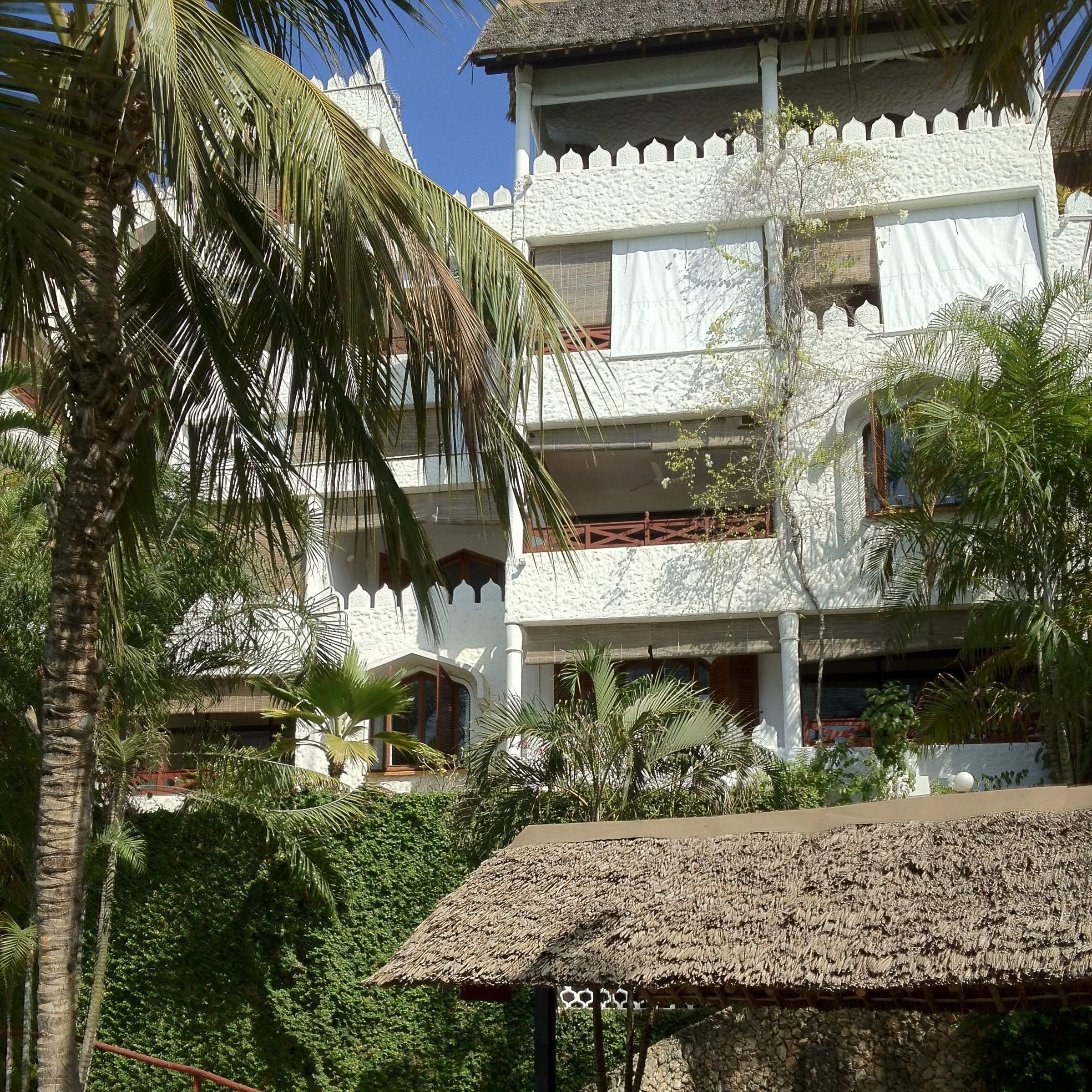
Tamarind Village
Tamaarind Village is a well managed apartment complex close to Mombasa city, with excellent restaurants, pools and visitor services.
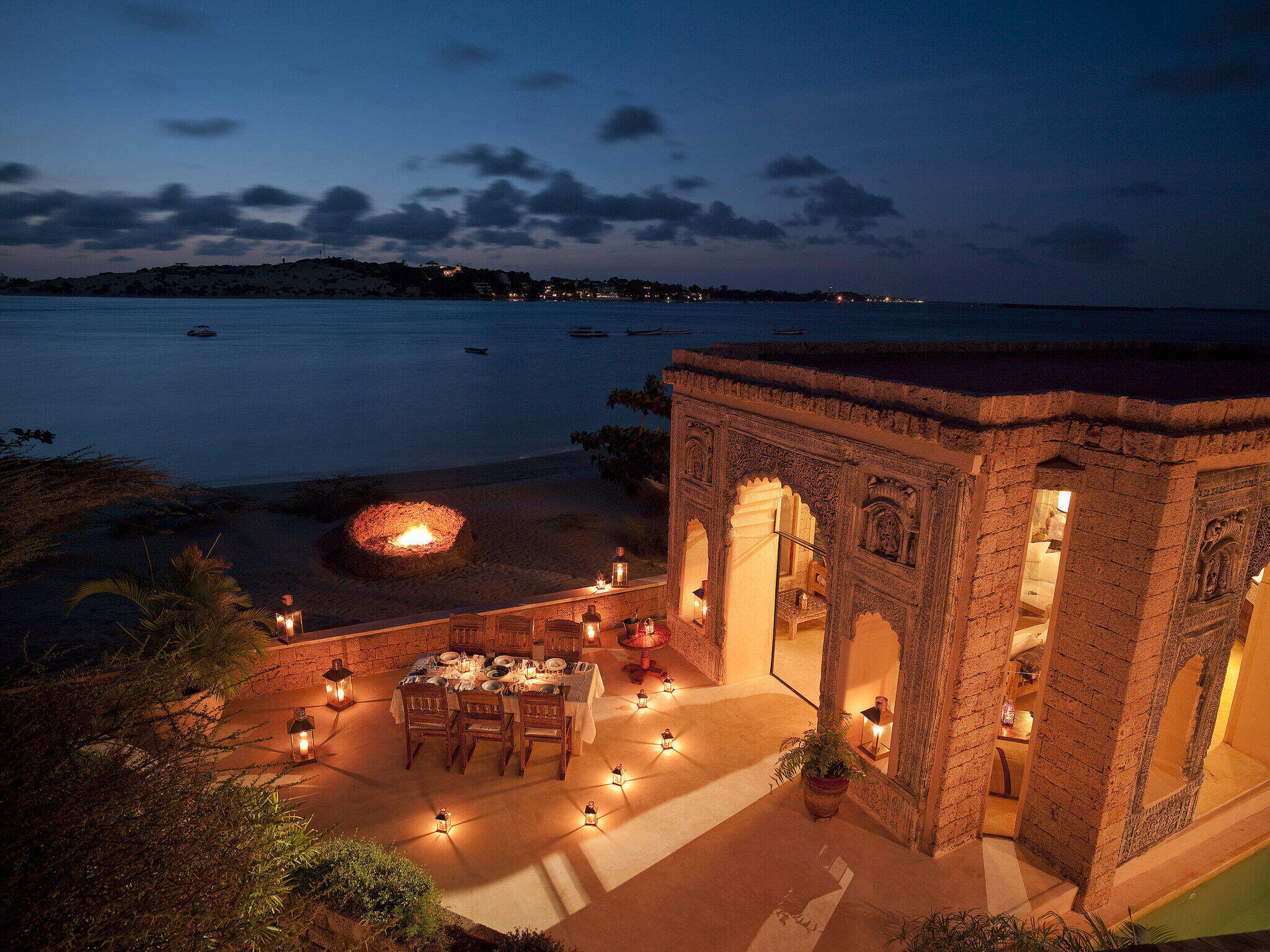
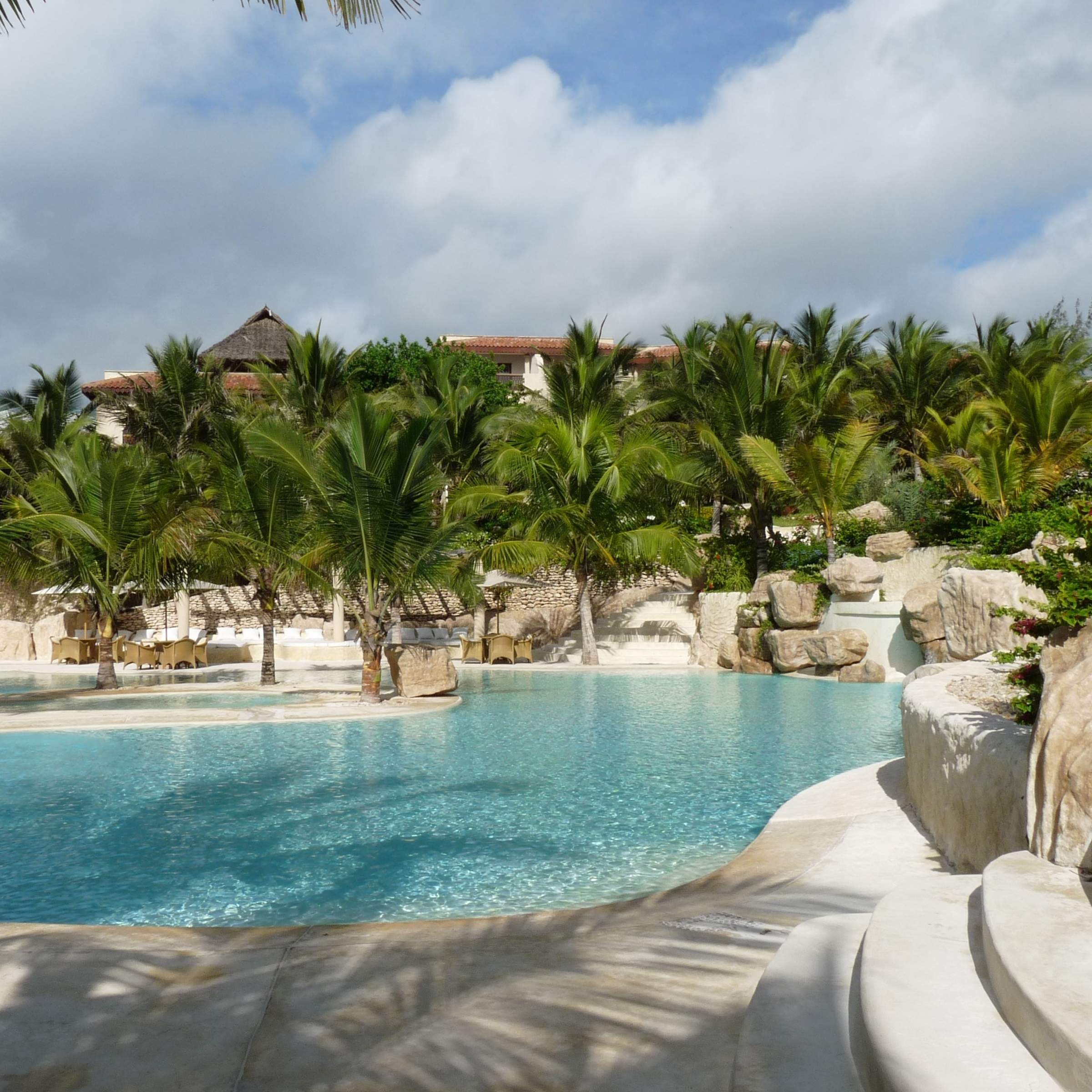
Swahili Beach
Swahili Beach is one of the biggest resort hotels on Diani Beach, with a spectacular lobby and cascading swimming pool.
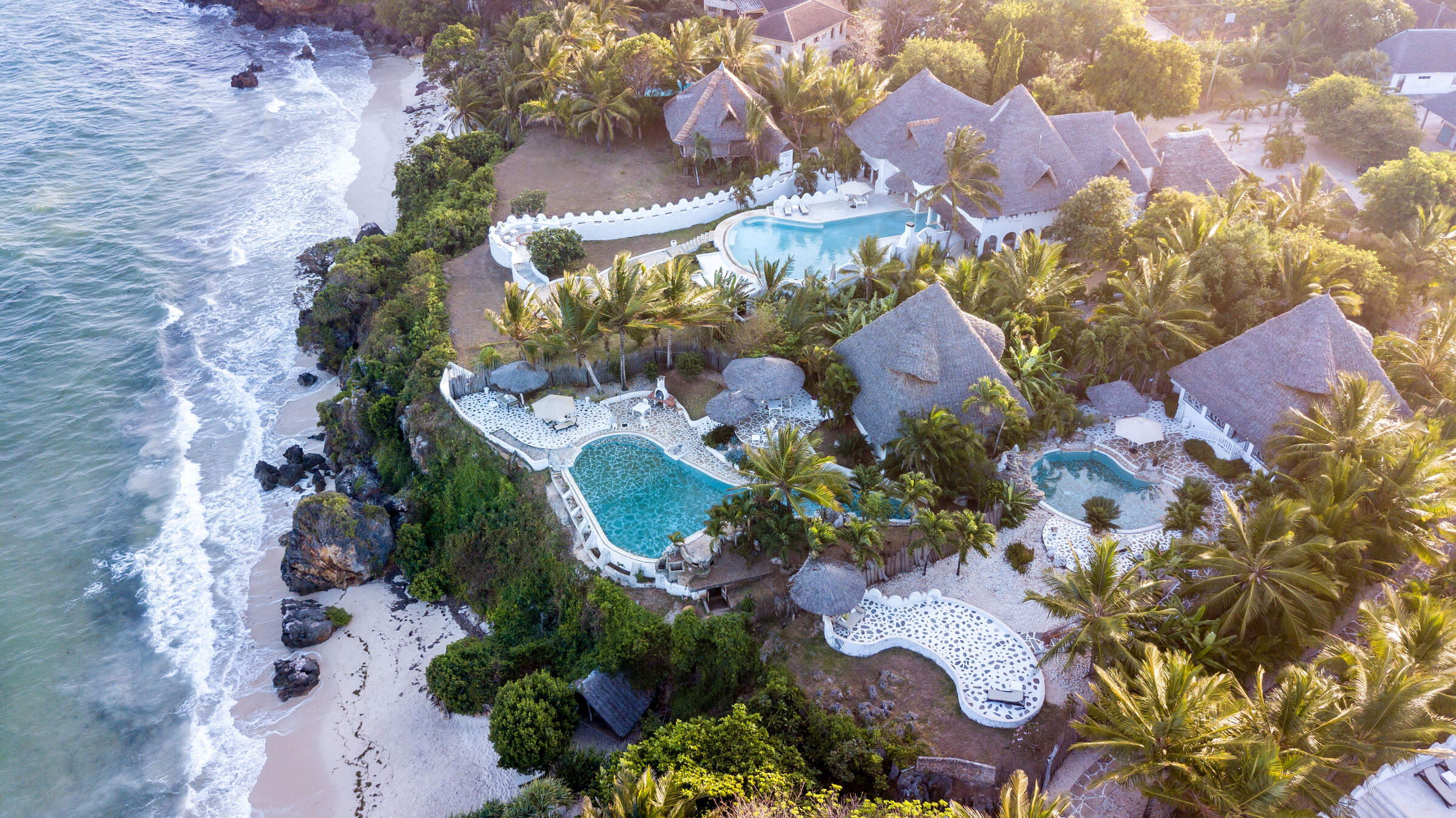
Msambweni Beach House
Msambweni Beach House is a secluded and luxurious boutique hotel on the southern Kenya coast, south of Diani Beach.
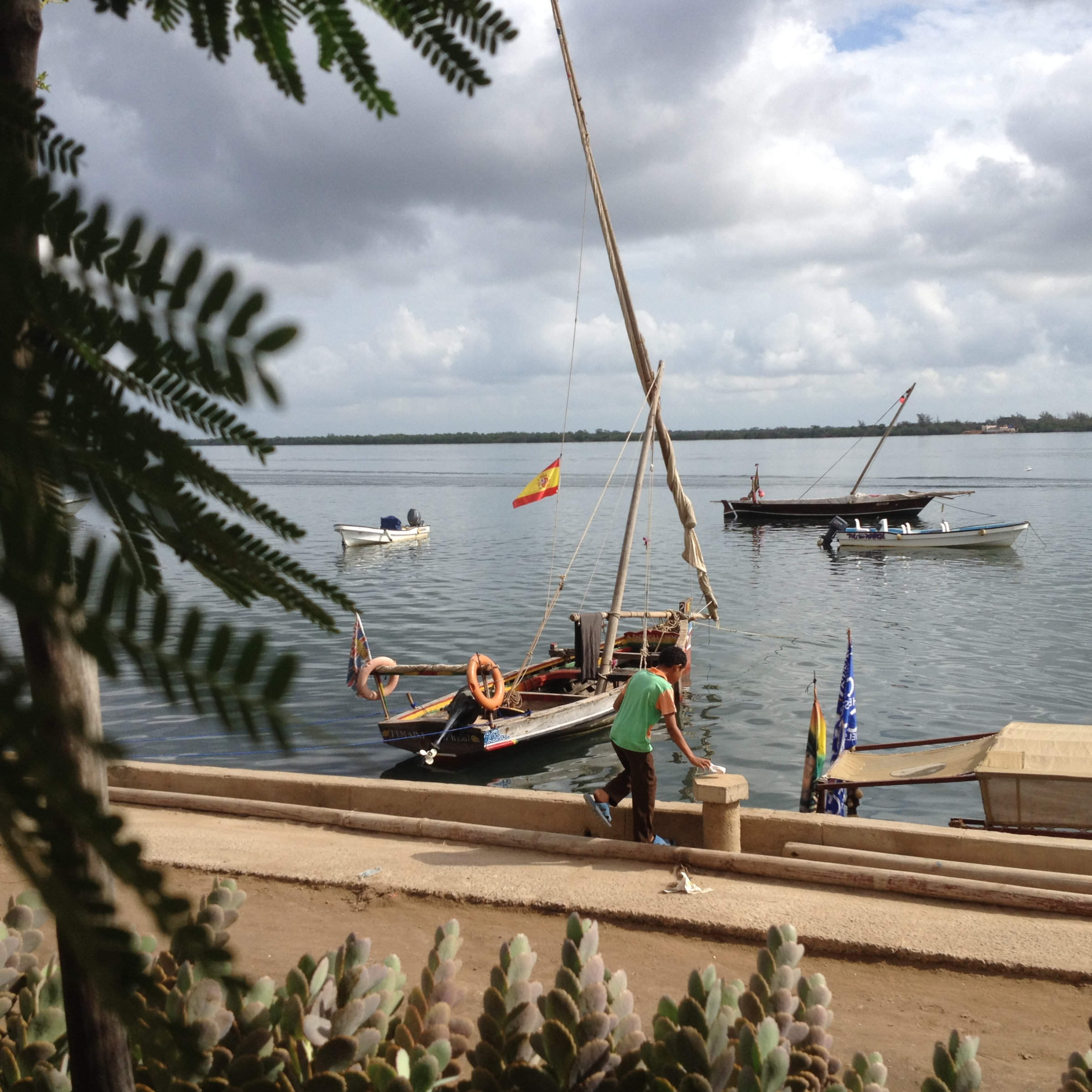
Lamu House
Lamu House is a boutique hotel on the waterfront in Lamu town, with a swimming pool, bar and terrace restaurant.
When to go to Kenya Coast
Our month by month guide: What it's like to visit Kizingo in Kenya Coast
Jan
Feb
Mar
Apr
May
Jun
Jul
Aug
Sep
Oct
Nov
Dec
Kenya in January
Clear, hot days and warm nights make this high season a popular time for safaris and it’s also good for diving and snorkelling as water clarity is excellent and gets better as the dry season progresses. Most lodges and tented camps treat January after the New Year week is over, as mid-season, making it a good compromise in terms of value for money with reasonably reliable, dry weather and some greenery left in the landscape.
Expert Africa bases its description of climate and weather in January, like the other months of the year, on the climate records of roughly the last 100 years, and it's fair to say that the weather and seasons since the beginning of this century have been highly irregular and unpredictable.
- On average, January is the second driest month of the year
- Elephants dig waterholes in the dry riverbed in the Samburu reserve.
- Wildebeest and many antelope have their calving season, to February.
- Migrant birds are seen in huge numbers, especially in the Rift Valley.
- Sea water clarity around the coral reefs generally good.
Our view
Fantastic: the very best time to visit
Weather in January
Kenya in February
With the short dry season well established, the grass grazed down and wildlife gathering close to water points, this is still a good time for a safari. Good water clarity in the Indian Ocean's coastal waters makes for excellent diving and snorkelling conditions.
Expert Africa bases its description of climate and weather in February, like the other months of the year, on the climate records of roughly the last 100 years, and it's fair to say that the weather and seasons since the beginning of this century have been highly irregular and unpredictable.
- On average, February is the driest month of the year.
- It’s sometimes possible to swim with whale sharks at Diani Beach.
- Migrant birds are still seen everywhere, especially near water.
- This is usually peak calving season for wildebeest and many antelopes.
- This month is often the hottest of the year, especially on the coast.
Our view
A very good time to visit
Weather in February
Kenya in March
Hot, increasingly humid weather – with good diving and snorkelling conditions at the start of the month – gives way to rains and lower accommodation costs. Expert Africa bases its description of climate and weather in March, like the other months of the year, on the climate records of roughly the last 100 years, and predicting the seasons since the beginning of this century has been difficult.
March is the month when – traditionally – intensely hot conditions build up until a cloudburst finally happens at the end of the month or in early April, to relieve the humidity. As ever, regional variations across the country can greatly impact on visitors' experiences.
- Sea-water clarity is best for diving before the long rains start.
- Visitor numbers are low, though the Easter holidays can be busier.
- Night skies can be scintillatingly clear in early March.
- Cropped down savannah grasses can make it easier to see the wildlife.
- Temperartures climb high, especially at lower elevations.
Our view
A good time to visit, with pros & cons
Weather in March
Kenya in April
April sees the full onset of the southeast monsoon wind or kusi, which heralds the long rains. Temperatures drop soon after the rains are established and you’ll often have facilities largely to yourself in this more affordable low season, sometimes known as the "green season". The bush quickly springs to life, with greenery sprouting almost before your eyes. While you're likely to get a fair number of heavy showers, the breaks in the rain can yield sparklingly clear conditions.
With the dust settled and bright sun piercing the clouds, conditions can be sublime for photography, especially first thing in the morning or in the late afternoon with another storm brewing. You may be lucky, or you may find conditions very wet and muddy.
- A wet month, the coast often gets more than 300mm (12in) of rain.
- Sunny spells can provide great light for photography.
- Buffalo and zebra calving season often happens in this month.
- Baby crocodiles hatch, for example on Central Island in Lake Turkana.
- Palearctic migrant birds gather to fly north to breeding grounds.
Our view
A time to avoid if possible
Weather in April
Kenya in May
While game viewing can be trickier as vegetation runs riot, between the cloudbursts the colours and light are great for photography at this time of year. Expert Africa bases its description of climate and weather in May, like the other months of the year, on the climate records of roughly the last 100 years, and while it's reasonable to expect heavy rains in many parts during this month, especially on the coast, the rains don't always come evenly or in some areas come at all.
In an El Niño year, the so-called long rains that normally are established across much of the country by May can be meagre, to the despair of farmers. On the other hand in a La Niña year, the long rains can bring floods. On the coast, the monsoon winds make the climate much more predictable, with heavy rains common throughout this month.
- Frogs breed in the ponds in the Arabuko Sokoke Forest near Watamu.
- Wildebeest, impala and other grazers are in rut (the breeding season).
- Kilimanjaro looks its best as heavy rain falls as snow on the summit.
- There's a sharp peek of rainfall on the coast with many rainy days.
- Accommodation prices are uniformly low, while some camps close.
Our view
A time to avoid if possible
Weather in May
Kenya in June
The rains give way to cloudy, cooler weather, often making for comfortable conditions by the end of the month, especially in the highlands. Starting from mid-June or the beginning of July and running until the end of October, this is the high season, and accordingly has higher accommodation rates and – at least until early September – higher numbers of visitors.
While the early part of June can often be rainy on the coast, it can be a great time to go on safari, with fresh greenery, many young animals and good photographic conditions with clear air.
- The Taru Desert, inland from the coast, is carpeted with flowers.
- The Lake Turkana Cultural Festival is held in Loiyangalani.
- Madaraka Day (commemorating self rule) is 1 June.
- The annual Lewa marathon runs a course through the wildlife.
- The Diani Rules "sports" event rips up the rulebook at Diani Beach.
Our view
A good time to visit, with pros & cons
Weather in June
Kenya in July
Kenya’s “winter" season sets in (winter is a misnomer but locals feel the change), and the highlands can be rather grey. Skies are often cloudy and the days can be surprisingly cool, with an average daytime high in many highland safari areas of 15-20°C and night-time temperatures dropping below 10°C in Nairobi and the highlands. Lower parts of the country and the coast are usually warm and dry, typically reaching highs of around 25°C with lows in the high teens.
As this is the start of the high season, coinciding with the usual arrival of the wildebeest migration in the Maasai Mara, July is a busy month. Ask your Expert Africa specialist to advise on how to avoid the crowds, which is not that difficult to do.
- The wildebeest migration usually reaches the Maasai Mara in July.
- Simbi Lake (Kisumu) and Crater Lake (Naivasha) can attract flamingoes.
- Watersports start to pick up and some surfing is possible at Malindi.
- Afternoon thunderstorms are a common feature in the Maasai Mara.
- The sea can be choppy along the coast, making diving difficult.
Our view
A good time to visit, with pros & cons
Weather in July
Kenya in August
The Great Migration fills the plains of the Maasai Mara, and school’s out, so the park roads are full of tourists – ask your Expert Africa specialist for advice on crowd avoidance tactics. Choose a private conservancy rather than a public national park or national reserve for quieter conditions.
Like July, August is generally mild and relatively dry in the safari areas, but it can be very chilly in the highlands, even in the middle of the day, and hail occasionally falls above altitudes of around 2,400m (8,000ft). Nairobi can be disappointingly overcast, with low cloud.
- Apart from Christmas holidays, this is the busiest month of the year.
- Late August sees peak wildebeest drama at the Mara River crossings.
- Coastal winds are good for kite- and wind-surfing.
- Few mosquitoes are around at this generally dry time of year.
- The annual Camel Derby takes place in the Samburu capital, Maralal.
Our view
A good time to visit, with pros & cons
Weather in August
Kenya in September
The skies clearing of cloud signals the start of hot, dry weather with little chance of rain – and, after the first few days of the month, far fewer visitors – making the latter part of September a good time for a quieter safari. While early September is often good for dramatic migration crossings along the Mara River, you might consider deliberately postponing your trip until later in the month, when the migration can still be very impressive and visitor numbers fewer.
If tourist surges are somewhat predictable, however, the patterns of the wildebeest migration are more volatile, and like all of Expert Africa's climate and weather assessments, they are based on accumulated years of experience rather than guaranteed certainty.
- This is still high season, with prices to match.
- Many river crossings take place on the Mara river in both directions.
- Natural bush fires flush out insects and small animals for predators.
- The Rift Valley Music Festival takes place by Lake Naivasha.
- With school holidays over by early September, late-month is quieter.
Our view
Fantastic: the very best time to visit
Weather in September
Kenya in October
Still hot, mostly dry and not too busy, this is many people’s preferred month for a safari, and it’s also good for diving and snorkelling. The wildebeest and zebra herds of the great migration are often still to be seen, though in dwindling numbers. The swamps of Amboseli attract thirsty wildlife including large herds of elephants.
While we wouldn't expect much rain across most of the country this month, the climate has become so unpredictable that you can never say never, and the possibiity of the short rains – usually associated with November to mid-December, starting early, can't be discounted.
- This month sees the tail end of the great migration in the Mara.
- Palearctic migrant birds start to arrive, staying until March.
- Turtle nests hatch at Watamu, until November.
- Amboseli elephants focus on the swamps for their daily water.
- The Indian Ocean monsoon winds turn from southeast to northeast.
Our view
A very good time to visit
Weather in October
Kenya in November
The northeast monsoon wind or kaskazi heralds the start of the “short rains", usually some time in the second half of the month. From November to mid-December, this is the low season, and accordingly has lower accommodation rates and lower visitor numbers. Across most of the country you can expect warm, somewhat cloudy weather, with occasional heavy showers and localised flooding.
Expert Africa bases its description of the climate in November, like the other months of the year, on the records of roughly the last 100 years, and it's fair to say that the seasons since the beginning of this century have been highly irregular and unpredictable: some years the short rains don't come at all, or don't reach every part of the country. In an El Niño year, the November short rains can be very heavy, but in a La Niña year, they can fail completely.
- Swimming with dolphins in Lamu can be done from now until April.
- Birders gather at Ngulia in Tsavo West to ring Palearctic migrants.
- The Lamu Cultural Festival takes over the town and Lamu Creek.
- Agricultural shows often take place regional market towns.
- This is low season, so camps can be great value, with special offers.
Our view
A good time to visit, with pros & cons
Weather in November
Kenya in December
In a typical December, the rains usually finish by middle of the month, leaving the landscape looking its best, under clear blue skies, and heralding the start of the second peak tourist season from around 20 December to the first week of January. Our assessment of the likely weather in December, like the other months of the year, is based on climate records, and it's fair to say that the seasons since the beginning of this century have been highly irregular and unpredictable.
Christmas can sometimes be wet, but most years the rains have finished a week or two earlier, with the festive season ushering in the perfect combination of clear skies and sunshine by day and starry nights.
- Christmas and New Year are busy, with the lodges and camps full.
- Rates are highest after 24 Dec, with supplements on public holidays.
- Republic Day and Independence day are celebrated on 12 December.
- Good kite- and wind-surfing restarts, with strong northeasterly winds.
- Mango season begins, providing excitement for primates and elephants.
Our view
A good time to visit, with pros & cons
Weather in December

Looking for inspiration on where to travel next?
Visit our trip chooser to explore your options and find inspiration for your perfect African adventure
Inspire me